Search Result
Results for "
intake
" in MedChemExpress (MCE) Product Catalog:
3
Biochemical Assay Reagents
8
Isotope-Labeled Compounds
| Cat. No. |
Product Name |
Target |
Research Areas |
Chemical Structure |
-
- HY-114976
-
-
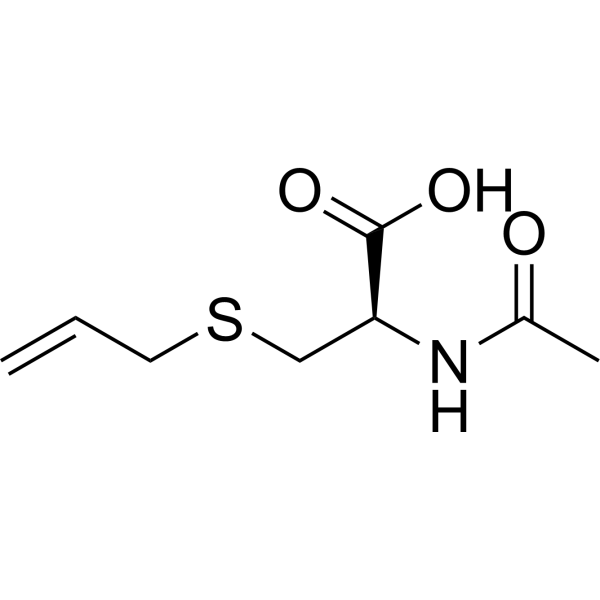
-
- HY-122666
-
|
|
GlyT
|
Metabolic Disease
|
|
Org 25935 is a potent and selective glycine transporter 1 protein (GlyT1) inhibitor with an IC50 value of 100 nM. Org 25935 can decrease ethanol (EtOH) intake and EtOH preference in rats, whereas water intake is unaffected. Org 25935 can be used for researching alcohol dependence or abuse .
|
-
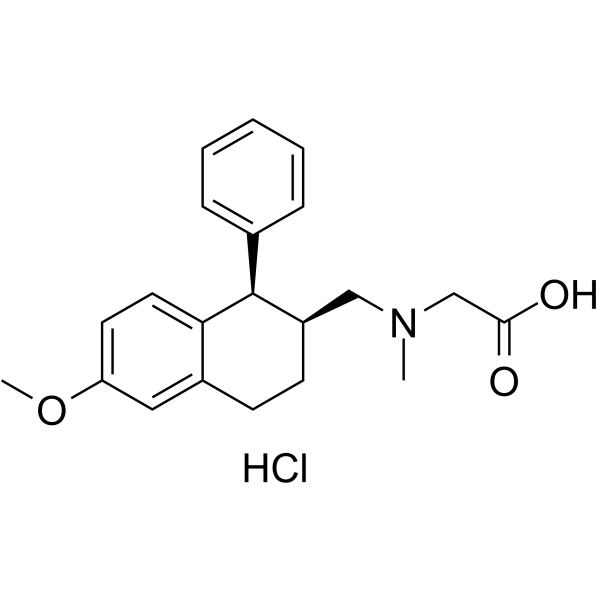
-
- HY-124412S
-
-
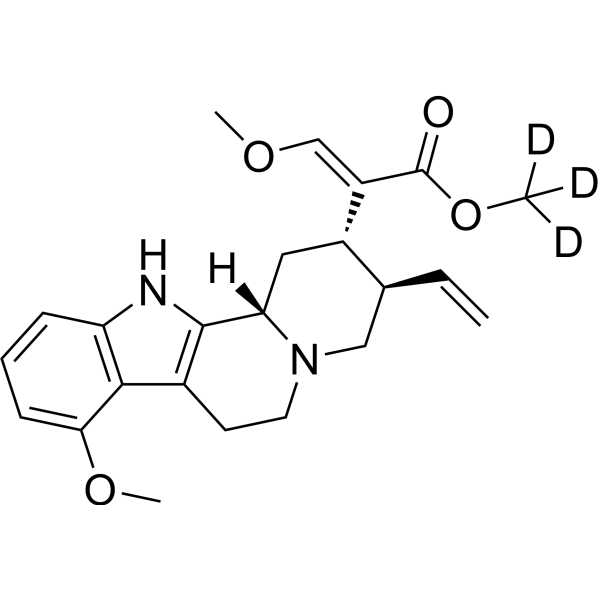
-
- HY-135502S
-
-
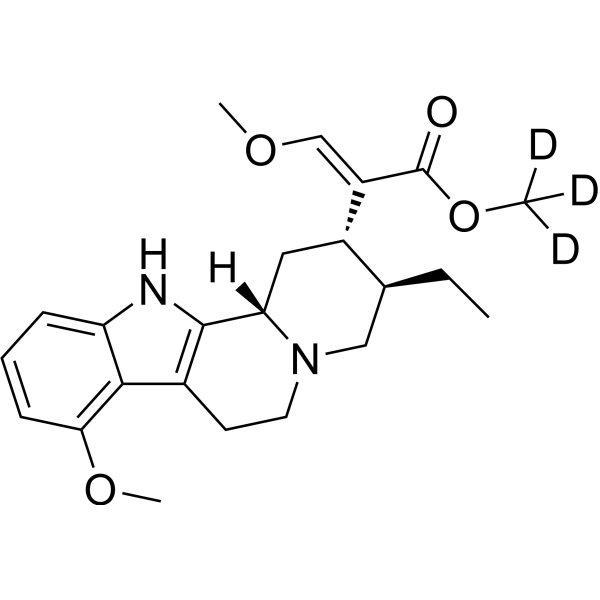
-
- HY-P1215
-
|
|
Melanocortin Receptor
|
Metabolic Disease
|
|
HS024 is a selective MC4 receptor antagonist, with Kis of 0.29, 3.29, 5.45, and 18.6 nM for MC4, MC5, MC3, and MC1, respectively. HS024 increase food intake .
|
-

-
- HY-P1215A
-
|
|
Melanocortin Receptor
|
Metabolic Disease
|
|
HS024 is a selective MC4 receptor antagonist, with Kis of 0.29, 3.29, 5.45, 18.6 nM for MC4, MC5, MC3, and MC1, respectively. HS024 increase food intake .
|
-

-
- HY-103500
-
-
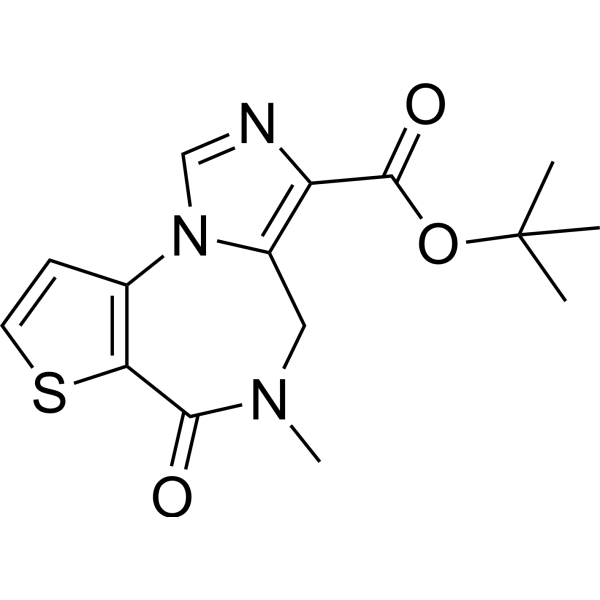
-
- HY-P3462A
-
|
|
CGRP Receptor
|
Metabolic Disease
|
|
Cagrilintide acetate is a non-selective AMYR/CTR agonist and long-acting acylated amylase analogue. Cagrilintide acetate causes a reduction in food intake and significant weight loss in a dose-dependent manner. Cagrilintide acetate can be used in obesity studies .
|
-

-
- HY-P3462
-
|
|
CGRP Receptor
|
Metabolic Disease
|
|
Cagrilintide is an investigational novel long-acting acylated amylin analogue, acts as nonselective amylin receptors (AMYR) and calcitonin G protein-coupled receptor (CTR) agonist. Cagrilintide induces significant weight loss and reduces food intake. Cagrilintide has the potential for the research of obesity .
|
-

-
- HY-P1067A
-
|
|
Endogenous Metabolite
|
Metabolic Disease
|
|
Enterostatin (human,mouse,rat) TFA is a pentapeptide mainly formed in the intestine by the cleavage of secreted pancreatic procolipase. Enterostatin selectively reduces fat intake, bodyweight, and body fat in vivo .
|
-

-
- HY-105034
-
|
BMY 13859-1 free base
|
5-HT Receptor
|
Neurological Disease
|
|
Tiospirone is a 5-HT2 receptor antagonist with affinity for D2, 5-HT1a, and 5-HT7, and sigma receptors. Tiospirone decreases consumption of ethanol while increasing food intake of rats. Tiospirone can also reduce the reinforcing properties of Cocaine exhibited in the conditioned place preference paradigm .
|
-
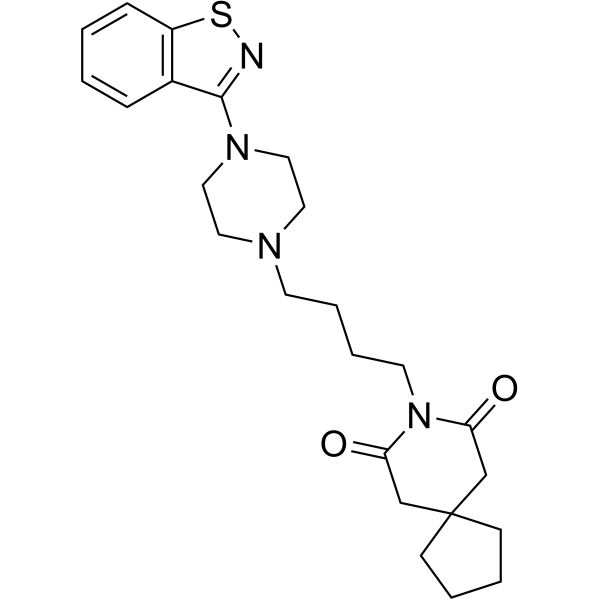
-
- HY-121827
-
|
|
Cannabinoid Receptor
|
Metabolic Disease
|
|
LH-21 is a potent in vivo neutral cannabinoid CB1 receptor antagonist. LH-21 reduces food intake and body weight gain in obese Zucker rats.
, and displays efficacy as a feeding inhibitor .
|
-

-
- HY-P3704
-
|
|
Endogenous Metabolite
|
Metabolic Disease
|
|
Enterostatin (rat), an orally active activation peptide of procolipase, selectively reduces fat intake. Enterostatin (rat) reduces serum cholesterol levels by way of a CCK1 receptor-dependent mechanism .
|
-
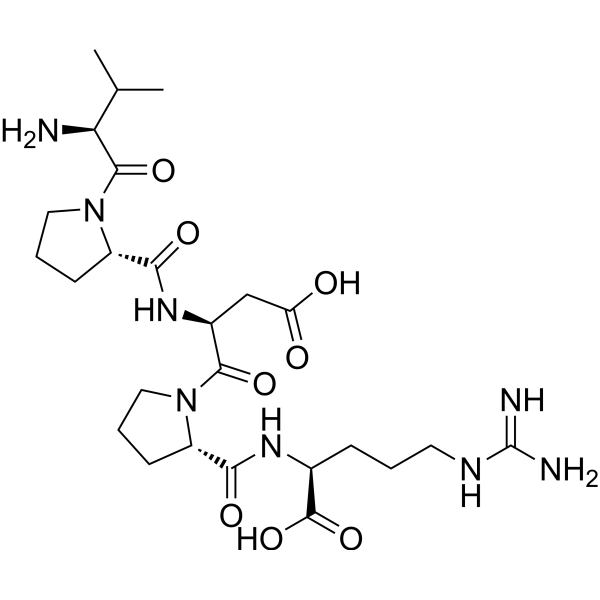
-
- HY-P1216A
-
|
|
Melanocortin Receptor
|
Neurological Disease
|
|
HS014 TFA is a potent and selective melanocortin-4 (MC4) receptor antagonist, with Kis of 3.16, 108, 54.4 and 694 nM for human MC4, MC1, MC3 and MC5 receptors respectively. HS014 TFA increases food intake in free-feeding rats .
|
-
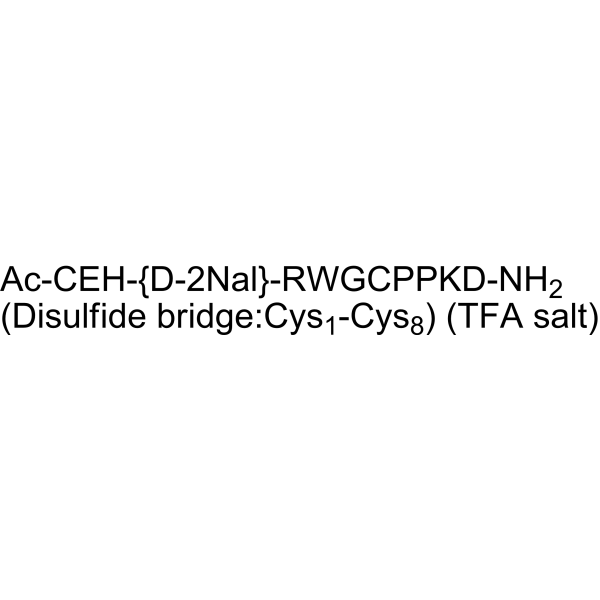
-
- HY-P2210
-
|
|
GPR171
|
Metabolic Disease
|
|
BigLEN(mouse) is a potent and selective agonist of orphan G protein-coupled receptor 171 (GPR171), with a Kd of ∼0.5 nM. BigLEN(mouse) can be used to regulate responses associated with food intake and metabolism .
|
-
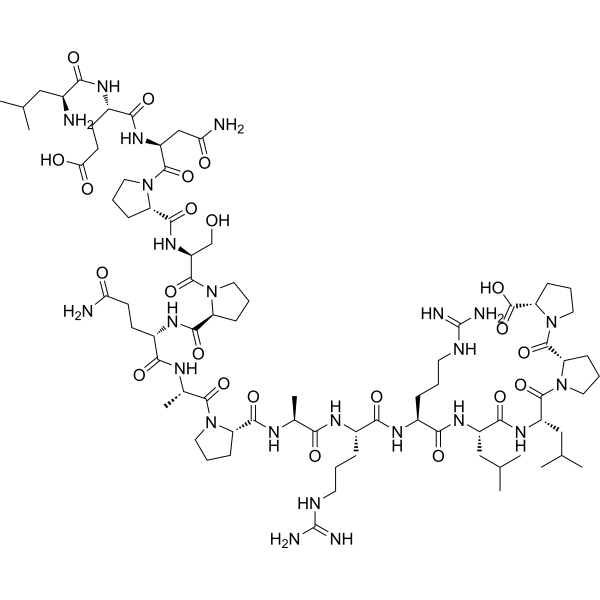
-
- HY-P2046
-
|
|
Opioid Receptor
|
Neurological Disease
|
|
β-Endorphin (rat) is an endogenous opioid neuropeptide and peptide hormone. β-Endorphin (rat) has analgesic activity and also contributes to food intake in satiated rats. β-Endorphin (rat) can be used in the research of neurological diseases such as analgesia and drug addiction .
|
-

-
- HY-125096
-
|
|
Glucocorticoid Receptor
|
Metabolic Disease
Inflammation/Immunology
|
|
C108297 is a selective glucocorticoid receptor (GR) modulator (GR binding Ki 0.7 nM; GR reporter gene functional Ki 0.6 nM). C108297 attenuates obesity by reducing caloric intake and increasing lipolysis and fat oxidation, and in addition attenuates inflammation .
|
-

-
- HY-W010042
-
|
L-(-)-Glucose
|
Others
|
Metabolic Disease
Cancer
|
|
L-Glucose (L-(-)-Glucose) is a stereoisomer of D-Glucose (HY-B0389), which does not readily enter the brain. L-Glucose can promote food intake. L-glucose is combined with a fluorescence detector to produce a fluorescent probe that can be used to visualize and characterize cancer cells. L-Glucose also can be used in the research to enhance memory in mice .
|
-
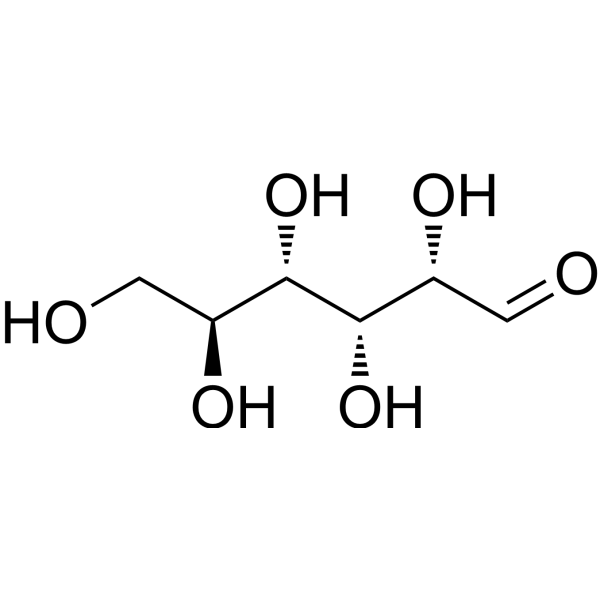
-
- HY-P3561
-
|
|
Melanocortin Receptor
|
Neurological Disease
|
|
Agouti-related Protein (AGRP) (83-132) Amide (human) is a fragment of agouti-related protein (AGRP) which is a protein found in abundance in the arcuate nucleus of the hypothalamus. AgRP primarily acts as an inverse agonist for the melanocortin-4 receptor (MC4R) to increase food intake .
|
-

-
- HY-118949
-
|
|
Opioid Receptor
|
Metabolic Disease
|
|
LY255582 is a pan-opioid antagonist and has high affinity for mu, delta, and kappa receptors (Ki: 0.4 nM, 5.2, 2.0 nM respectively). LY255582 can decrease food intake and body weight. LY255582 can be used for the research of obesity .
|
-
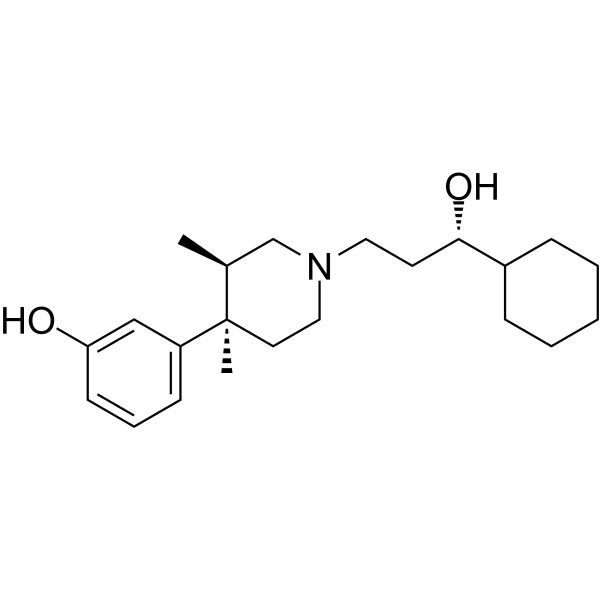
-
- HY-P3561A
-
|
|
Melanocortin Receptor
|
Neurological Disease
|
|
Agouti-related Protein (AGRP) (83-132) Amide (human) TFA is a fragment of agouti-related protein (AGRP) which is a protein found in abundance in the arcuate nucleus of the hypothalamus. AgRP primarily acts as an inverse agonist for the melanocortin-4 receptor (MC4R) to increase food intake .
|
-

-
- HY-P3130
-
|
|
CRFR
|
Neurological Disease
Inflammation/Immunology
|
|
Stresscopin-related peptide (human) is a specific ligand for the type 2 CRH receptor. Stresscopin-related peptide (human) suppresses food intake, delayed gastric emptying and decreases heat-induced edema. Stresscopin-related peptide (human) maintains homeostasis after stress, and can be used in the research of stress-related diseases .
|
-

-
- HY-P1216
-
|
|
Melanocortin Receptor
|
Neurological Disease
|
|
HS014 is a potent and selective melanocortin-4 (MC4) receptor antagonist, with Kis of 3.16, 108, 54.4 and 694 nM for human MC4, MC1, MC3 and MC5 receptors, respectively. HS014 modulates the behavioral effects of morphine in mice. HS014 increases food intake in free-feeding rats .
|
-

-
- HY-P1322
-
|
|
Neuropeptide Y Receptor
|
Neurological Disease
|
|
[D-Trp34]-Neuropeptide Y is a potent and selective neuropeptide Y (NPY) Y5 receptor agonist. [D-Trp34]-Neuropeptide Y is a significantly less potent agonist at the NPY Y1, Y2, Y4, and y6 receptors. [D-Trp34]-Neuropeptide Y markedly increases food intake in rats .
|
-
![[D-Trp34]-Neuropeptide Y](//file.medchemexpress.com/product_pic/hy-p1322.gif)
-
- HY-116797
-
|
MS0015203
|
GPR171
|
Metabolic Disease
|
|
MS15203 is a potent and selective GPR171 agonist. MS15203 increases food intake and body weight. MS15203 increases neuronal activity. MS15203 significantly increases the abundance of the mRNAs encoding proSAAS, NPY, AgRP .
|
-
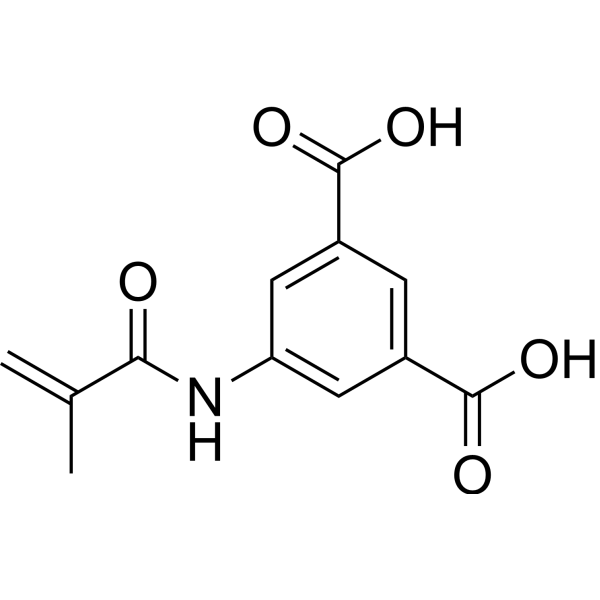
-
- HY-P1322A
-
|
|
Neuropeptide Y Receptor
|
Neurological Disease
|
|
[D-Trp34]-Neuropeptide Y TFA is a potent and selective neuropeptide Y (NPY) Y5 receptor agonist. [D-Trp34]-Neuropeptide Y TFA is a significantly less potent agonist at the NPY Y1, Y2, Y4, and y6 receptors. [D-Trp34]-Neuropeptide Y TFA markedly increases food intake in rats .
|
-
![[D-Trp34]-Neuropeptide Y TFA](//file.medchemexpress.com/product_pic/hy-p1322a.gif)
-
- HY-P1306
-
|
|
GHSR
|
Cardiovascular Disease
Inflammation/Immunology
|
|
Obestatin(rat), encoded by the Ghrelin gene, is a cpeptide, comprised of 23 amino acids. Obestatin(rat) suppresses food intake, inhibits jejunal contraction, and decreases body-weight gain. Obestatin is an endogenous ligand of G-protein coupled receptor 39 (GPR39). Obestatin(rat) has anti-inflammatory, anti-myocardial infarction and antioxidant activities .
|
-

-
- HY-P1306A
-
|
|
GHSR
|
Cardiovascular Disease
Inflammation/Immunology
|
|
Obestatin(rat) TFA, encoded by the Ghrelin gene, is a cpeptide, comprised of 23 amino acids. Obestatin(rat) TFA suppresses food intake, inhibits jejunal contraction, and decreases body-weight gain. Obestatin is an endogenous ligand of G-protein coupled receptor 39 (GPR39). Obestatin(rat) TFA has anti-inflammatory, anti-myocardial infarction and antioxidant activities .
|
-

-
- HY-P1349A
-
|
Rat orexin B TFA; Orexin B (mouse) (TFA)
|
Orexin Receptor (OX Receptor)
|
Neurological Disease
Endocrinology
|
|
Orexin B, rat, mouse (Rat orexin B) TFA is an endogenous orexin receptor agonist. Orexin B, rat, mouse TFA binds and activates two closely related orphan G protein-coupled receptors OX1-R and OX2-R. Orexin B, rat, mouse TFA stimulates food intake and energy expenditure and plays a significant role in sleep-wakefulness regulation .
|
-

-
- HY-19848
-
|
LBM-642
|
PPAR
|
Metabolic Disease
|
|
Cevoglitazar (LBM-642) is an orally active and highly potent PPARα and PPARγ dual agonist. Cevoglitazar can reduce food intake, body weight, and fasting plasma insulin in obese mice and cynomolgus monkeys. Cevoglitazar has the potential for diabetes and obesity-related disorders research .
|
-

-
- HY-P3463
-
|
GLP-1 (human)
|
GCGR
|
Metabolic Disease
Inflammation/Immunology
|
|
Beinaglutide is a human GLP-1 polypeptide that shares almost 100% homology with human GLP-1 (7–36). Beinaglutide displays does-dependent effects in glycemic control, inhibiting food intake and gastric empty and promoting weight loss. Beinaglutide has the potential for the research of overweight/obesity and nonalcoholic steatohepatitis (NASH) .
|
-

-
- HY-P1323
-
|
|
Neuropeptide Y Receptor
|
Cardiovascular Disease
Neurological Disease
|
|
[Leu31,Pro34]-Neuropeptide Y(human,rat) is a specific neuropeptide Y Y1 receptor agonist. [Leu31,Pro34]-Neuropeptide Y(human,rat) slao activates Y4, Y5. [Leu31,Pro34]-Neuropeptide Y(human,rat) can increase blood pressure in anesthetized rats and increases food intake .
|
-
![[Leu31,Pro34]-Neuropeptide Y (human,rat)](//file.medchemexpress.com/product_pic/hy-p1323.gif)
-
- HY-P1323A
-
|
|
Neuropeptide Y Receptor
|
Cardiovascular Disease
Neurological Disease
|
|
[Leu31,Pro34]-Neuropeptide Y(human,rat) TFA is a specific neuropeptide Y Y1 receptor agonist. [Leu31,Pro34]-Neuropeptide Y(human,rat) TFA slao activates Y4, Y5. [Leu31,Pro34]-Neuropeptide Y(human,rat) TFA can increase blood pressure in anesthetized rats and increases food intake .
|
-
![[Leu31,Pro34]-Neuropeptide Y(human,rat,mouse) TFA](//file.medchemexpress.com/product_pic/hy-p1323a.gif)
-
- HY-14342
-
MK-5046
1 Publications Verification
|
Bombesin Receptor
|
Metabolic Disease
|
|
MK-5046 is a potent, selective and orally active Bombesin receptor subtype-3 (BRS-3) allosteric agonist with an IC50 and an EC50 value of 27 and 25 nM for hBRS-3, respectively. MK-5046 inhibits food intake and reduces body weight of diet-induced obese (DIO) mouse models. MK-5046 can be used for the research of obesity .
|
-
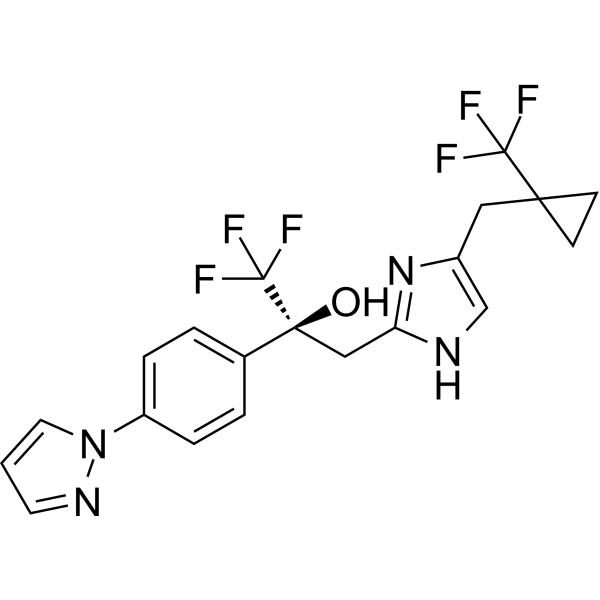
-
- HY-149663
-
|
|
Acyltransferase
|
Metabolic Disease
|
|
BMS-986172 is an orally active, highly selective MGAT2 inhibitor with an IC50 of 4.6 nM and 20 nM for hMGAT2 and mMGAT2, respectively. BMS-986172 has a T1/2>120 min in vitro assays. BMS-986172 reduces food intake and body weight. BMS-986172 has the potential for metabolic disorders such as obesity and NASH research .
|
-
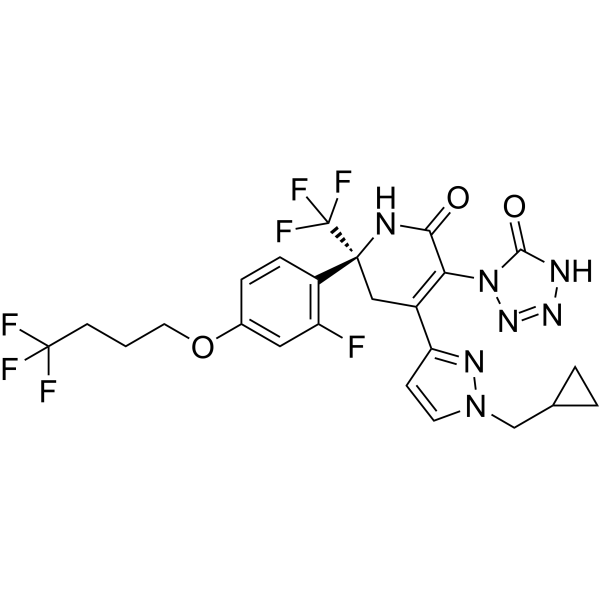
-
- HY-14495
-
|
EX-1314
|
GHSR
|
Metabolic Disease
|
|
BMS-604992 (EX-1314) is a selective, orally active small-molecule growth hormone secretagogue receptor (GHSR) agonist. BMS-604992 demonstrates high-affinity binding (Ki=2.3 nM) and potent functional activity (EC50=0.4 nM). BMS-604992 can stimulate food intake in rodents .
|
-
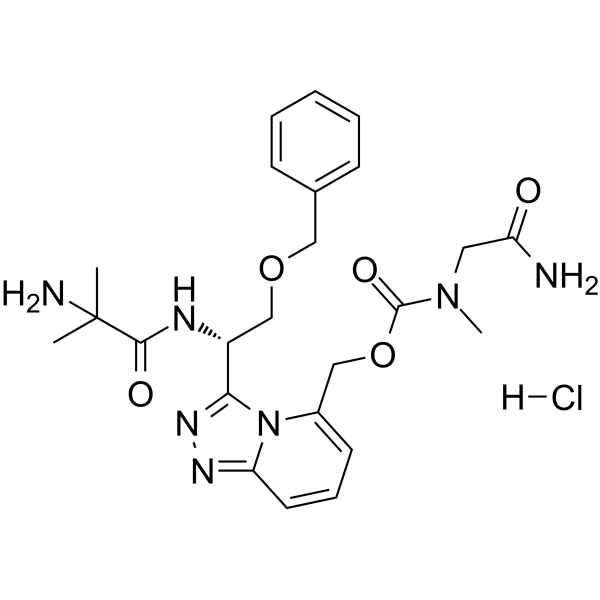
-
- HY-14495B
-
|
EX-1314 dihydrochloride
|
GHSR
|
Metabolic Disease
|
|
BMS-604992 (EX-1314) dihydrochloride is a selective, orally active small-molecule growth hormone secretagogue receptor (GHSR) agonist. BMS-604992 dihydrochloride demonstrates high-affinity binding (ki=2.3 nM) and potent functional activity (EC50=0.4 nM). BMS-604992 dihydrochloride can stimulate food intake in rodents .
|
-

-
- HY-101764
-
|
SR 27897
|
Cholecystokinin Receptor
|
Metabolic Disease
|
|
Lintitript (SR 27897) is a highly potent, selective, orally active, competitive and non-peptide cholecystokinin (CCK1) receptor antagonist with an EC50 of 6 nM and a Ki of 0.2 nM. Lintitript displays > 33-fold selectivity more selective for CCK1 than CCK2 receptors (EC50 value of 200 nM). Lintitript increases plasma concentration of leptin and food intake as well as plasma concentration of insulin .
|
-
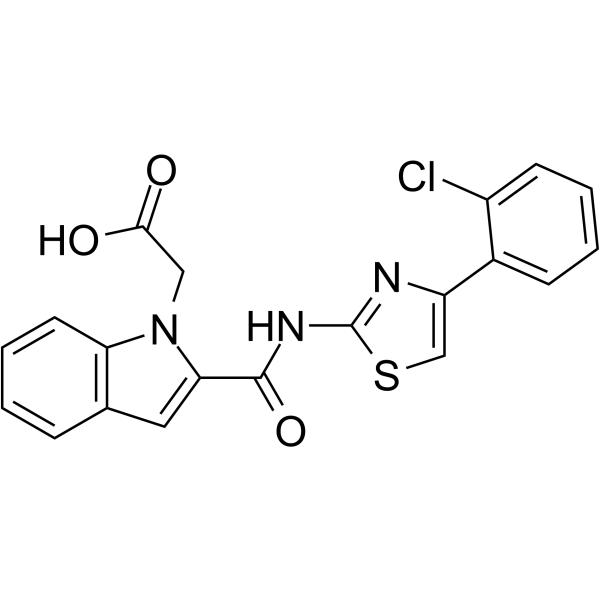
-
- HY-14495A
-
|
EX-1314 free base
|
GHSR
|
Metabolic Disease
|
|
BMS-604992 (EX-1314) free base is a selective, orally active small-molecule growth hormone secretagogue receptor (GHSR) agonist. BMS-604992 free base demonstrates high-affinity binding (ki=2.3 nM) and potent functional activity (EC50=0.4 nM). BMS-604992 free base can stimulate food intake in rodents .
|
-
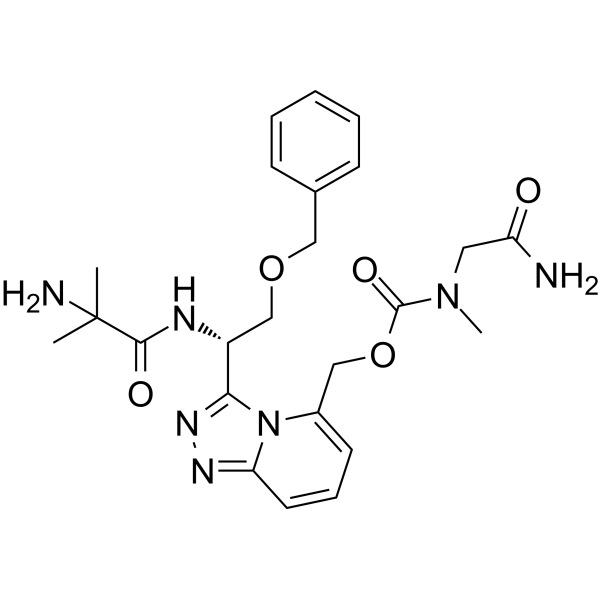
-
- HY-W010042S
-
-
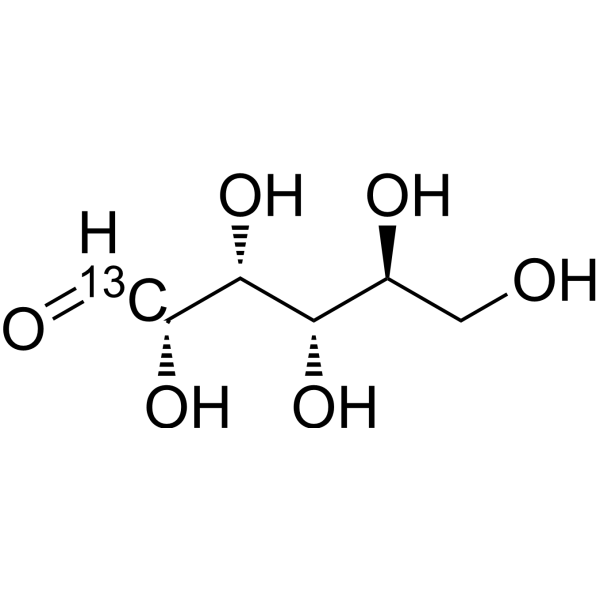
-
- HY-14342A
-
|
|
Others
|
Metabolic Disease
|
|
(R)-MK-5046 is the isomer of MK-5046 (HY-14342), and can be used as an experimental control. MK-5046 is a potent, selective and orally active Bombesin receptor subtype-3 (BRS-3) allosteric agonist with an IC50 and an EC50 value of 27 and 25 nM for hBRS-3, respectively. MK-5046 inhibits food intake and reduces body weight of diet-induced obese (DIO) mouse models. MK-5046 can be used for the research of obesity .
|
-
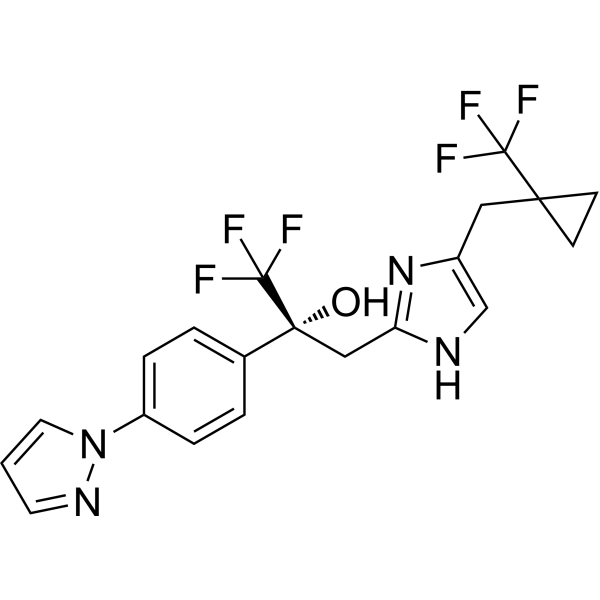
-
- HY-N12840
-
|
|
Others
|
Metabolic Disease
|
|
Logmalicid B is an iridoid glycoside compound that can be isolated from Cornus officinalis and can be used in diabetes research .
|
-

-
- HY-P4146
-
|
BI 456906
|
GLP Receptor
GCGR
|
Metabolic Disease
|
|
Survodutide (BI 456906) is a potent, selective glucagon receptor/GLP-1 receptor (GCGR/GLP-1R) dual agonist with EC50s of 0.52 nM and 0.33 nM in CHO-K1 cells, respectively. Survodutide, a 29-amino-acid peptide, is a potent acylated peptide containing a C18 fatty acid. Survodutide has robust anti-obesity efficacy achieved by increasing energy expenditure and decreasing food intake .
|
-

-
- HY-W010042S1
-
-
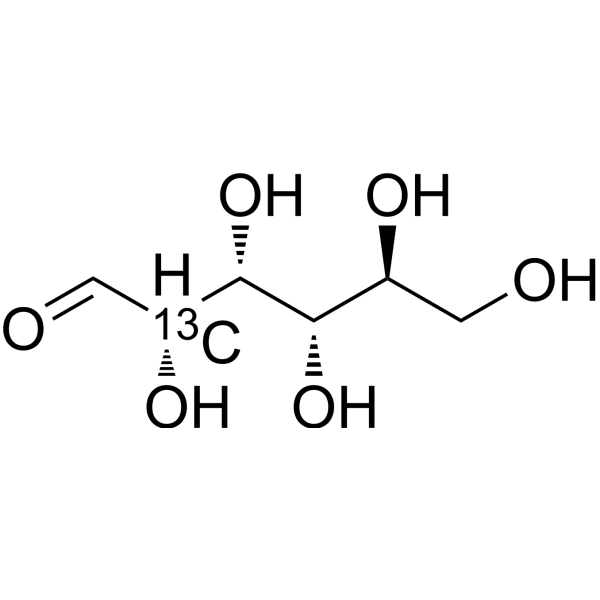
-
- HY-W010042S2
-
-
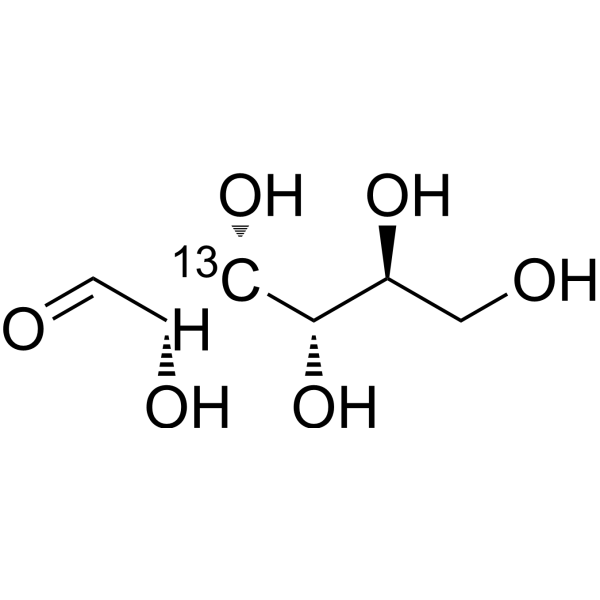
-
- HY-P4146A
-
|
BI 456906 TFA
|
GLP Receptor
GCGR
|
Metabolic Disease
|
|
Survodutide (BI 456906) TFA is a potent, selective glucagon receptor/GLP-1 receptor (GCGR/GLP-1R) dual agonist with EC50s of 0.52 nM and 0.33 nM in CHO-K1 cells, respectively. Survodutide TFA, a 29-amino-acid peptide, is a potent acylated peptide containing a C18 fatty acid. Survodutide TFA has robust anti-obesity efficacy achieved by increasing energy expenditure and decreasing food intake .
|
-

-
- HY-P1067
-
-
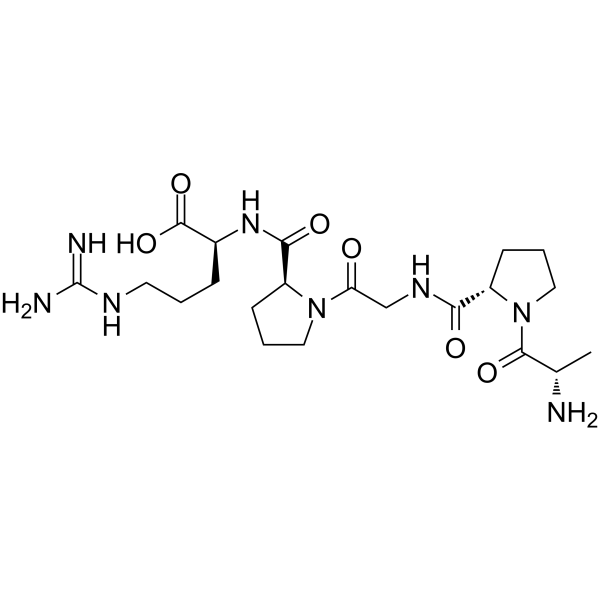
-
- HY-W017006
-
-
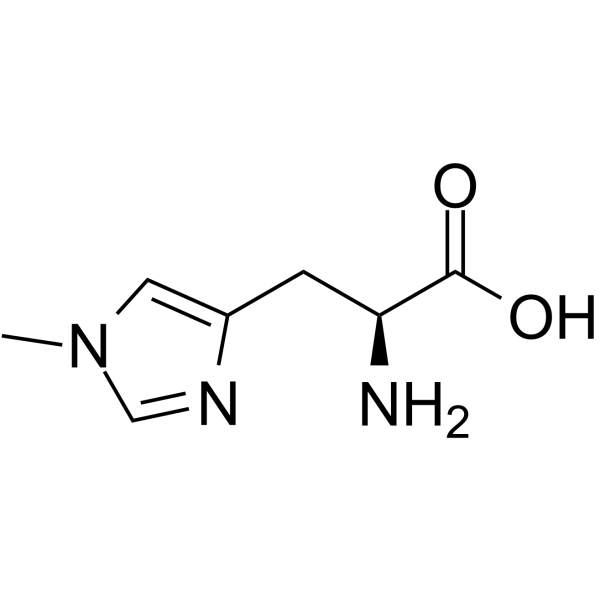
-
- HY-W127334
-
|
|
Biochemical Assay Reagents
|
Others
|
|
N-Palmitoyl phosphatidylethanolamine (Tripelargonin) is endogenous lipid anorectic hormone, significantly reduces food intake in a dose-dependent manner
|
-
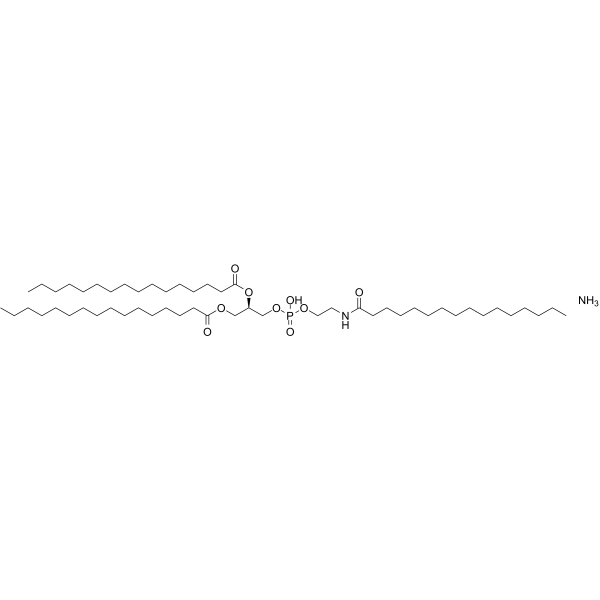
-
- HY-15121S
-
|
L-Glutamic Acid γ-ethyl amide-d5; Nγ-Ethyl-L-glutamine-d5
|
Apoptosis
Endogenous Metabolite
|
Neurological Disease
|
|
L-Theanine-d5 is the deuterium labeled L-Theanine. L-Theanine (L-Glutamic Acid γ-ethyl amide)is a non-protein amino acid contained in green tea leaves, which blocks the binding of L-glutamic acid to glutamate receptors in the brain, and with neuroprotective and anti-oxidative activities. L-Theanine causes anti-stress effects via the inhibition of cortical neuron excitation by oral intake[1][2][3].
|
-

- HY-118930
-
-
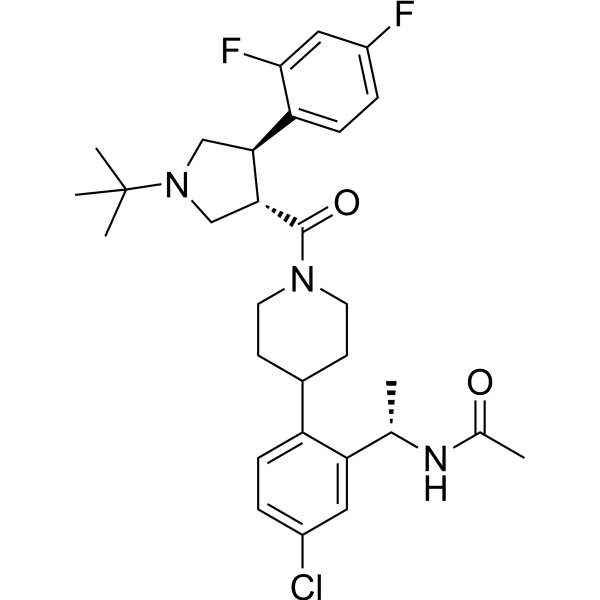
- HY-14811
-
|
ZGN-440; CKD-732 free base
|
MetAP
|
Metabolic Disease
|
|
Beloranib is a fumagillin-class methionine aminopetidase-2 (MetAP2) inhibitor. Beloranib decreases food intake, body weight, fat mass, and the size of adipocytes.
|
-
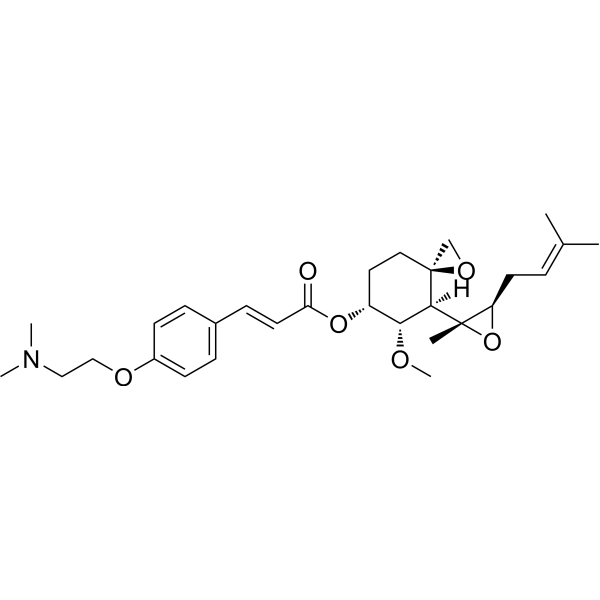
- HY-110107
-
-
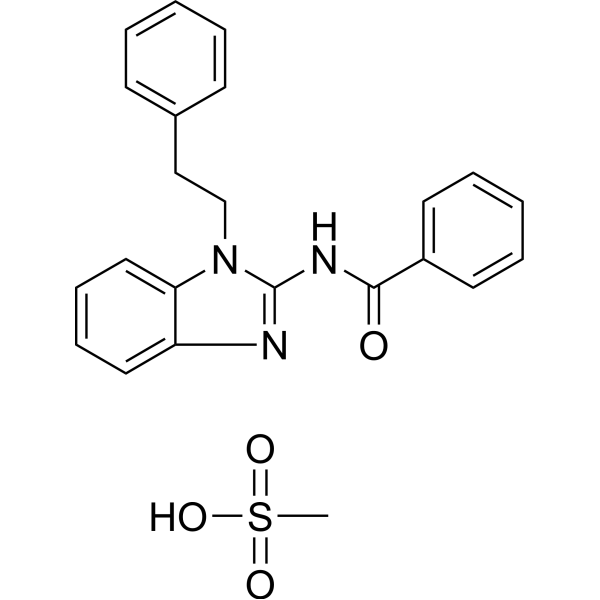
- HY-107728
-
-
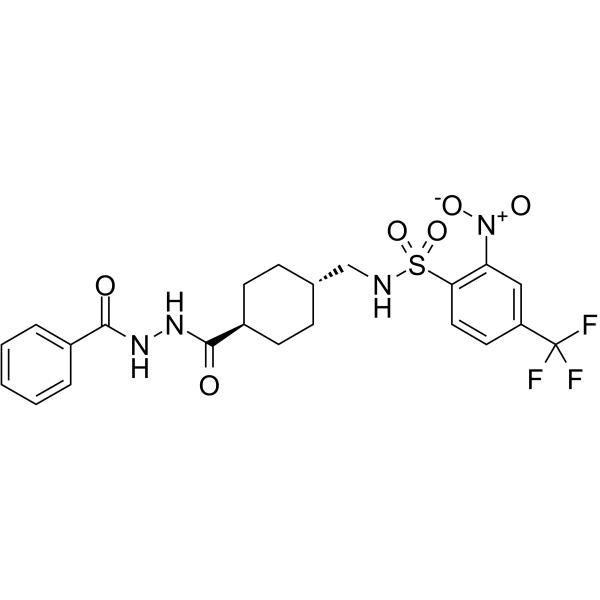
- HY-110020
-
-
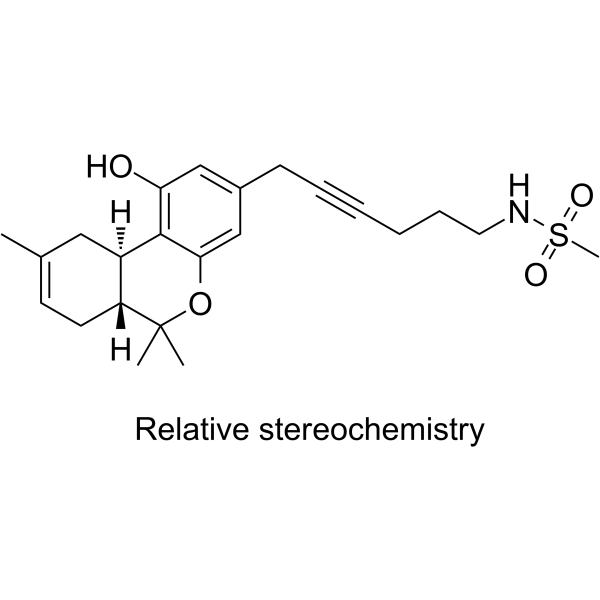
- HY-138795
-
|
|
Others
|
Cancer
|
|
Curcumin-β-D-glucuronide is a major metabolite after oral intake of Curcumin in hepatic tissue and portal blood. Curcumin-β-D-glucuronide can be used for the research of colon cancer .
|
-
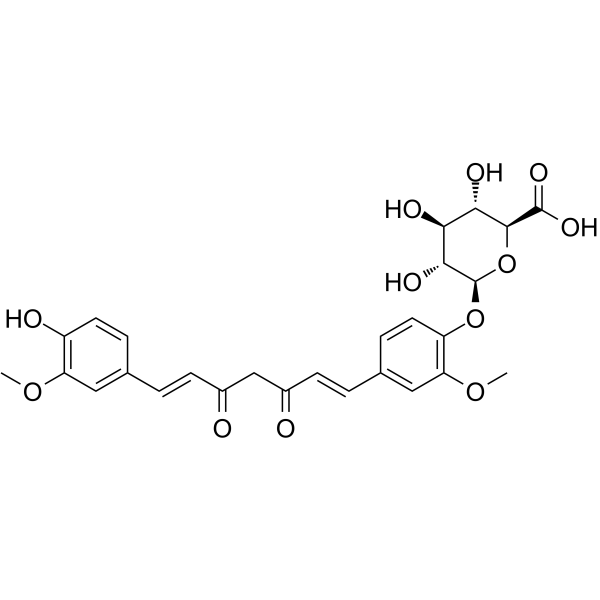
- HY-107627
-
|
|
Melanocortin Receptor
|
Inflammation/Immunology
|
|
MCL0020 is a potent and selective melanocortin MC4 receptor antagonist, with an IC50 of 11.63 nM. MCL0020 dose-dependently and significantly attenuates restraint stress-induced anorexia without affecting food intake .
|
-
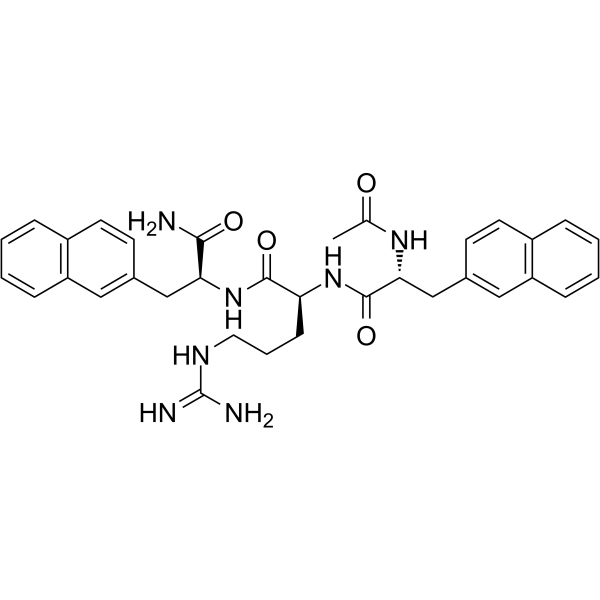
- HY-W010042S3
-
-

- HY-16007
-
|
Garcinia acid
|
ATP Citrate Lyase
|
Metabolic Disease
|
|
(-)-Hydroxycitric acid (Garcinia acid) is the principal acid of fruit rinds of Garcinia cambogia. (-)-Hydroxycitric acid is a potent and competitive and orally active inhibitor of ATP citrate lyase. (-)-Hydroxycitric acid suppresses the fatty acid synthesis, lipogenesis, food intake, and induced weight loss .
|
-
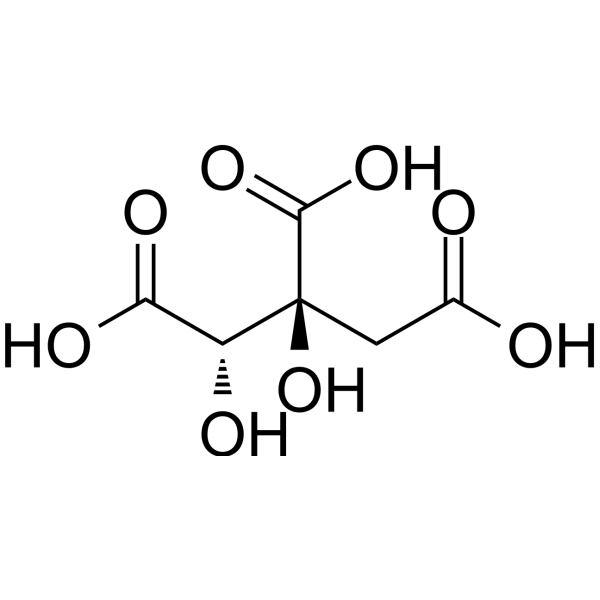
- HY-W017006S
-
|
|
Endogenous Metabolite
|
Metabolic Disease
|
|
1-Methyl-L-histidine-d3 is the deuterium labeled 1-Methyl-L-histidine. 1-Methyl-L-histidine is an objective indicator of meat ingestion and exogenous 3-methylhistidine (3MH) intake.
|
-

- HY-112612
-
|
|
GPR88
|
Neurological Disease
|
|
RTI-13951-33 is a potent, selective, and brain-penetrant GPR88 agonist, with an EC50 of 25 nM in GPR88 cAMP functional assay. RTI-13951-33 reduces alcohol reinforcement and intake behaviors in rats .
|
-
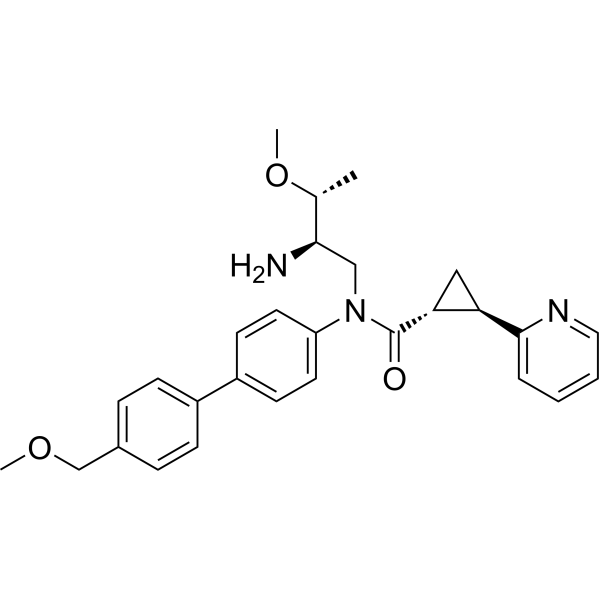
- HY-112612A
-
|
|
GPR88
|
Neurological Disease
|
|
RTI-13951-33 hydrochloride is a potent, selective, and brain-penetrant GPR88 agonist, with an EC50 of 25 nM in GPR88 cAMP functional assay. RTI-13951-33 hydrochloride reduces alcohol reinforcement and intake behaviors in rats .
|
-

- HY-10895
-
|
SB 334867A
|
Orexin Receptor (OX Receptor)
|
Neurological Disease
Endocrinology
|
|
SB-334867 (SB 334867A) is an excellent,selective and blood–brain barrier permeable orexin-1 (OX1) receptor antagonist, shows selectivity over OX2 (pKb=7.4), 100-fold over 5-HT2B, 5-HT2C with pKi values of 5.4 and 5.3, respectively . SB-334867 reduces ethanol consumption and inhibits the acquisition of morphine-induced sensitization to locomotor activity in vivo .
|
-
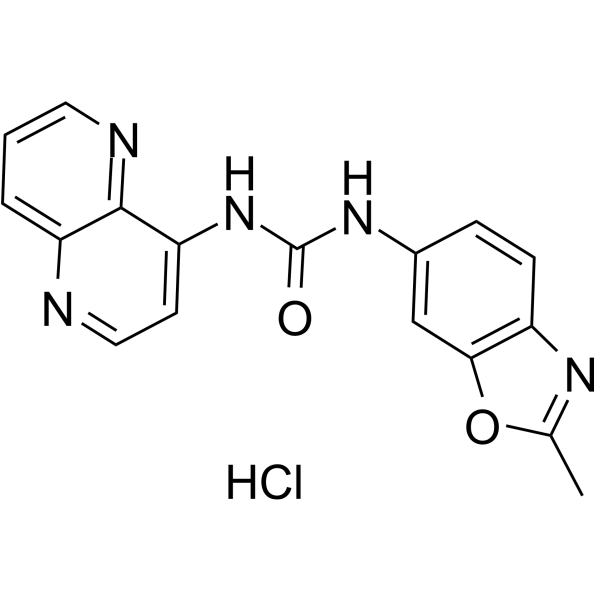
- HY-10895A
-
|
SB334867A free base
|
Orexin Receptor (OX Receptor)
|
Neurological Disease
Endocrinology
|
|
SB-334867 free base (SB334867A free base) is an excellent, selective and blood–brain barrier permeable orexin-1 (OX1) receptor antagonist, shows selectivity over OX2 (pKb=7.4), 100-fold over 5-HT2B, 5-HT2C with pKi values of 5.4 and 5.3, respectively . SB-334867 reduces ethanol consumption and inhibits the acquisition of morphine-induced sensitization to locomotor activity in vivo .
|
-
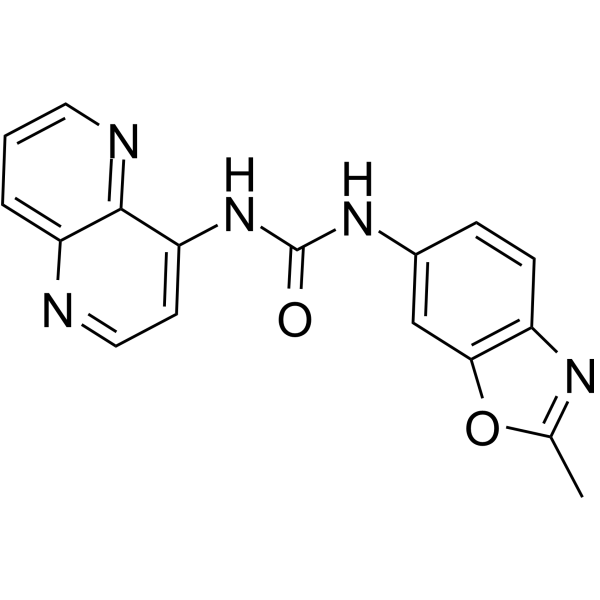
- HY-147335
-
|
|
Others
|
Cardiovascular Disease
|
|
6,9,12,15-Hexadecatetraenoic acid-ethyl ester is an orally active n-1PUFA. 6,9,12,15-Hexadecatetraenoic acid-ethyl ester intake can reduce plasma triglyceride content in mice .
|
-

- HY-W250120
-
|
|
Biochemical Assay Reagents
|
Others
|
|
Konjac glucomannan (Viscosity≥15000mPa.s) is an acetylated (1-4)-beta-D-glucomannan extracted from the tuber of konjac or konjac root. In Japan, it is a dietary supplement intended to reduce calorie intake because it swells in water.
|
-

- HY-P4815
-
|
|
Endogenous Metabolite
|
Neurological Disease
Metabolic Disease
|
|
Prokineticin 2 Isoform 2 (human) is a hypothalamic neuropeptide. Prokineticin 2 Isoform 2 (human) decreases food intake and involves in thermoregulation and energy metabolism in rodents. Prokineticin 2 has the potential for the research of hyperglycemia, metabolic syndrome (MetS) and obesity .
|
-
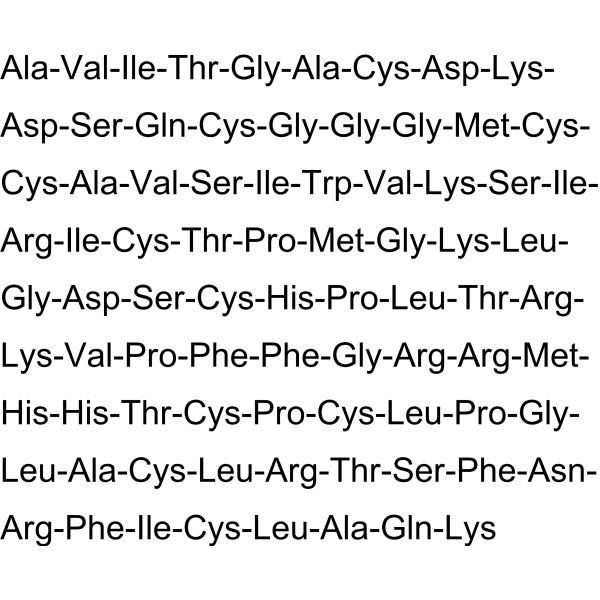
- HY-135319
-
|
|
Others
|
Infection
|
|
Strictinin is a phenolic compound isolated from Pu'er teas. Strictinin has potential antiviral, antibacterial and laxative activities. Strictinin occurs by accelerating intestinal transit rather than enhancing gastric emptying, increasing food intake, or inducing diarrhea in rats.
|
-
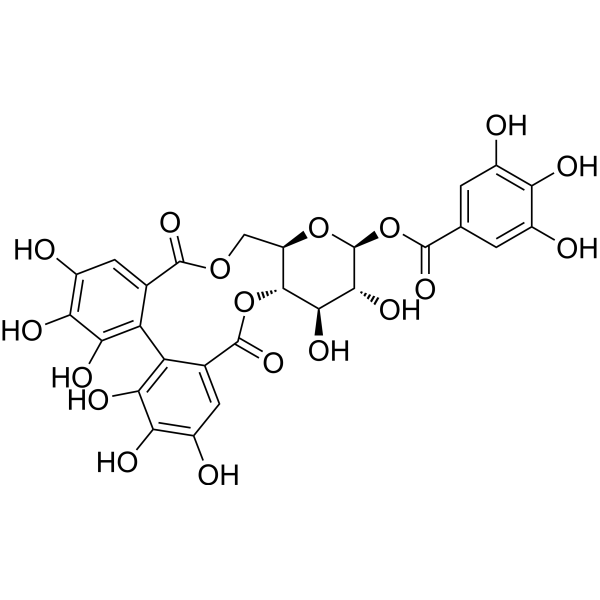
- HY-107734
-
|
|
Neuropeptide Y Receptor
|
Metabolic Disease
Endocrinology
|
|
L 152804 is an orally active and selective neuropeptide Y Y5 receptor (NPY5-R) antagonist, with a Ki of 26 nM for hY5. L 152804 causes weight loss in diet-induced obese mice by modulating food intake and energy expenditure .
|
-

- HY-111583
-
|
|
RXFP Receptor
|
Metabolic Disease
|
|
RXFP3/4 agonist 1 is an agonist of relaxin family peptide 3/4 receptor (RXFP3/4), with EC50s of 82/2 nM, respectivley. RXFP3/4 agonist 1 increases food intake in rats .
|
-

- HY-126910
-
|
|
Opioid Receptor
|
Metabolic Disease
|
|
Mesyl Salvinorin B is a potent and selective kappa opioid receptor (KOP-r) agonist. Mesyl Salvinorin B prevents the ADE (Alcohol deprivation effect) in mice. Mesyl Salvinorin B dose-dependently reduces alcohol intake and preference in CED (chronic escalation drinking) mice .
|
-
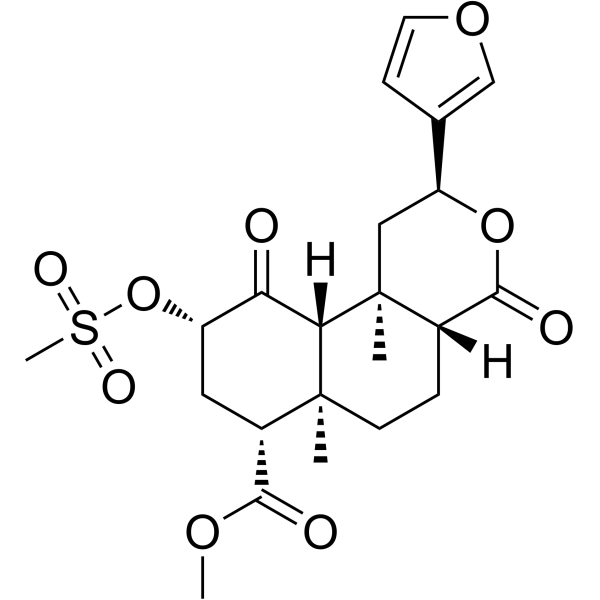
- HY-103327
-
|
|
Cannabinoid Receptor
|
Metabolic Disease
|
|
MJ15 is a potent and selective CB1 receptor antagonist with a Ki of 27.2 pM and an IC50 of 118.9 pM for rat CB1 receptors. MJ15 exhibits potency in obesity and hyperlipidemia models. MJ15 inhibits food intake and increases in body weight in diet-induced obese rats and mice .
|
-

- HY-P2703
-
|
|
Neuropeptide Y Receptor
|
Metabolic Disease
Endocrinology
|
|
Peptide YY (pig) is a 36 amino acid gastrointestinal peptide, can be isolated from porcine duodenum. Peptide YY (pig) decreases appetite and food-intake by activation of the Y2 receptor. Peptide YY (pig) is present mainly in pancreatic endocrine cells with effect on both intestinal motility and the cardiovascular system .
|
-

- HY-153798
-
|
|
GLP Receptor
|
Metabolic Disease
|
|
GLP-1 receptor agonist 10 (compound 42) is an agonist of GLP Receptor. GLP-1 receptor agonist 10 inhibits food intake and reduces glucose excursion in mice. GLP-1 receptor agonist 10 can be used in the study of type 2 diabetes (T2DM) and obesity .
|
-
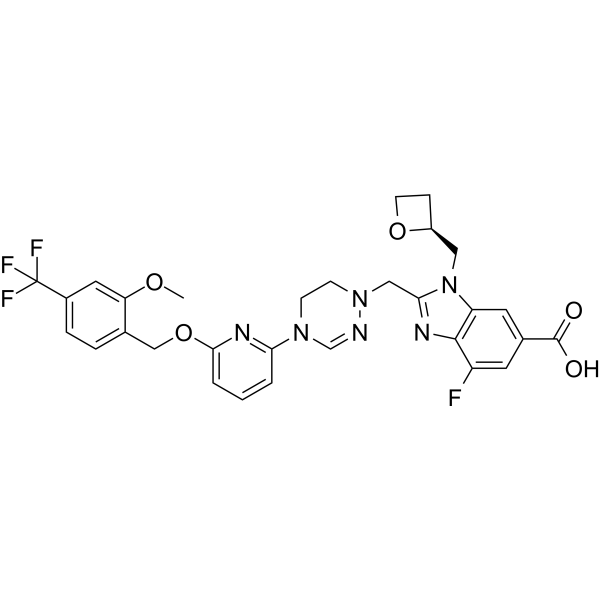
- HY-70068
-
-
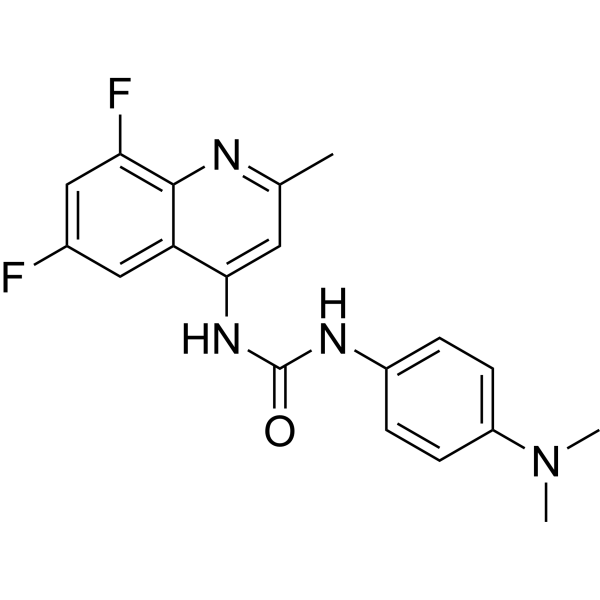
- HY-P1525
-
|
MCH (salmon)
|
MCHR1 (GPR24)
|
Cardiovascular Disease
Neurological Disease
Metabolic Disease
Endocrinology
|
|
Melanin Concentrating Hormone, salmon is a 19-amino-acid neuropeptide initially identified in the pituitary gland of teleost fish, which regulates food intake, energy balance, sleep state, and the cardiovascular system. Melanin-concentrating hormone is a ligand for an orphan G protein-coupled receptor (SLC-1/GPR24) and MCHR2.
|
-

- HY-107727
-
|
|
Neuropeptide Y Receptor
|
Neurological Disease
|
|
BMS-193885 (L-Lactic acid) is a potent, selective, and brain-penetrant neuropeptide Y1 receptor antagonist. BMS-193885 has a Ki value of 3.3 nM for the neuropeptide Y1 receptor, competitively acts on the neuropeptide Y binding site, and can reduce food intake and body weight through central Y1 inhibition .
|
-
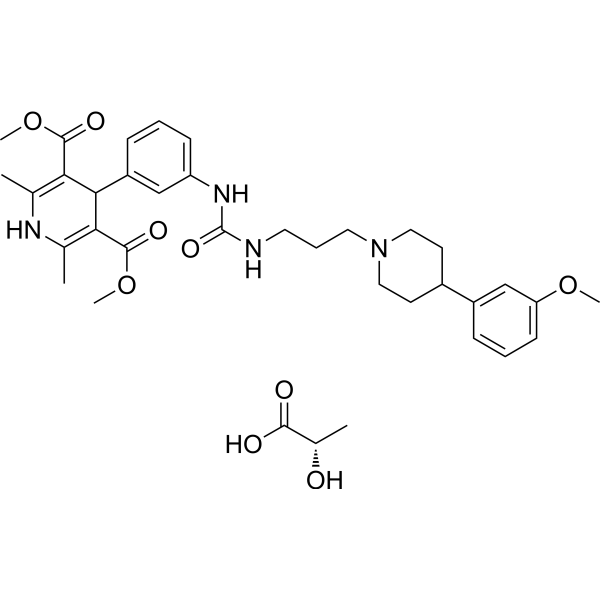
- HY-139230
-
|
|
Cannabinoid Receptor
PPAR
|
Metabolic Disease
|
|
OLHHA is a dual CB1 receptor antagonist and PPARα agonist. OLHHA also is a alcohol intake inhibitor with an EC50 value of 0.2 mg/kg. OLHHA reduces both hepatic lipid accumulation and circulating triglyceride levels. OLHHA shows anti-steatotic activity and has the potential for the research of non-alcoholic fatty liver disease (NAFLD) .
|
-
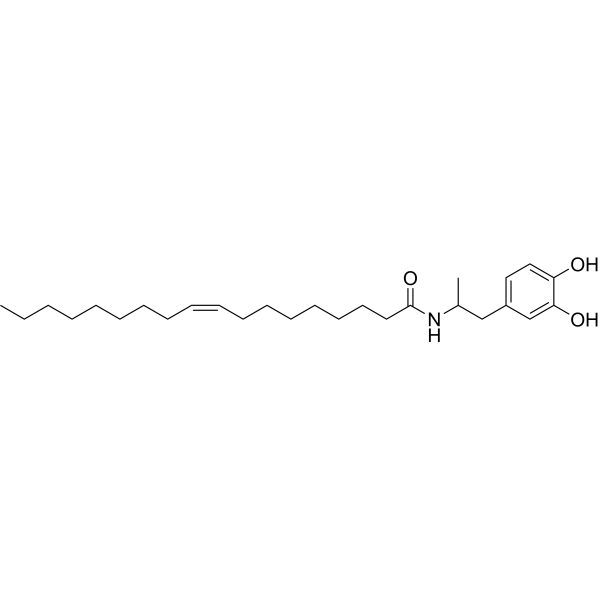
- HY-P1525A
-
|
MCH (salmon) (TFA)
|
MCHR1 (GPR24)
|
Cardiovascular Disease
Neurological Disease
Metabolic Disease
Endocrinology
|
|
Melanin Concentrating Hormone, salmon TFA (MCH (salmon) TFA) is a 19-amino-acid neuropeptide initially identified in the pituitary gland of teleost fish, which regulates food intake, energy balance, sleep state, and the cardiovascular system. Melanin-concentrating hormone is a ligand for an orphan G protein-coupled receptor (SLC-1/GPR24) and MCHR2.
|
-

- HY-122964
-
|
|
Cannabinoid Receptor
|
Metabolic Disease
|
|
URB447 is a peripherally restricted CB1 cannabinoid antagonist (IC50: 313 nM and 41 nM for rat CB1 and human CB2 receptor respectively ). URB447 lowers food intake and body-weight gain in mice without entering the brain or antagonizing central CB1-dependent responses. URB447 can be used for research of obesity .
|
-

- HY-P0198B
-
-
![[D-Arg25]-Neuropeptide Y (human)](//file.medchemexpress.com/product_pic/hy-p0198b.gif)
- HY-P3555
-
-
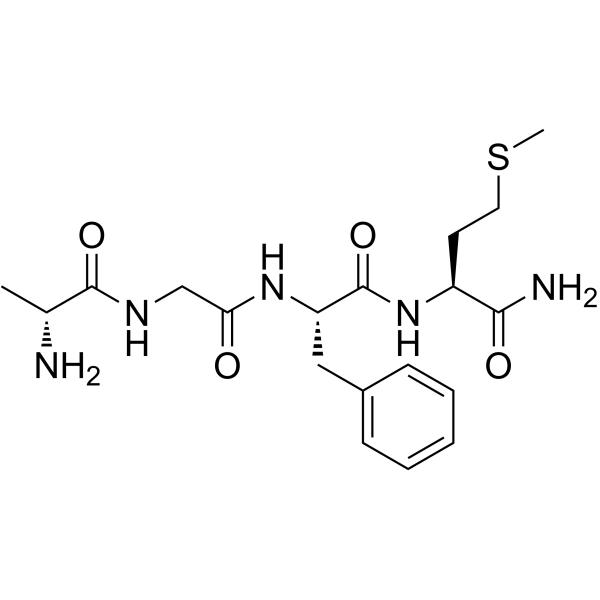
- HY-P3555A
-
|
|
Opioid Receptor
|
Others
|
|
D-Ala-Gly-Phe-Met-NH2 monoacetate, an opioid peptide, is a potent opiate δ-receptor agonist .
|
-
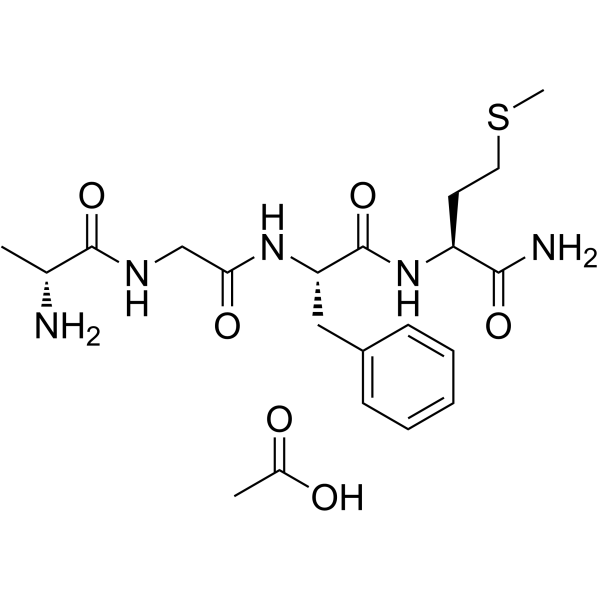
- HY-15386
-
|
MD 780515
|
Monoamine Oxidase
|
Metabolic Disease
|
|
Cimoxatone (MD 780515) is a reversible, selectively and orally active type A monoamine oxidase (MAO-A) inhibitor. Cimoxatone enhances the anorectic action of Serotonin (HY-B1473A) .
|
-
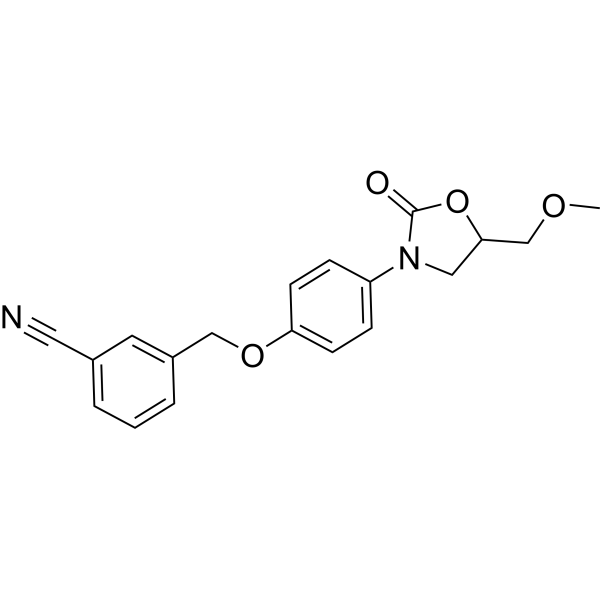
- HY-P1349
-
-

- HY-14788
-
|
AVE1625
|
Cannabinoid Receptor
|
Metabolic Disease
|
|
Drinabant (AVE1625) is an orally active CB1 receptor antagonist. Drinabant (AVE1625) inhibits the agonist-stimulated calcium signal with IC50 values of 25 nM and 10 nM for the hCB1-R and rCB1-R, respectively, and is ineffective for the hCB2-R .
|
-

- HY-103416
-
|
|
Dopamine Receptor
|
Neurological Disease
|
|
A-77636 hydrochloride is a potent, orally active, selective and long acting dopamine D1 receptor agonist (pKi=7.40; Ki=39.8 nM) with antiparkinsonian activity. A-77636 hydrochloride is functionally inactive at dopamine D2 receptor .
|
-
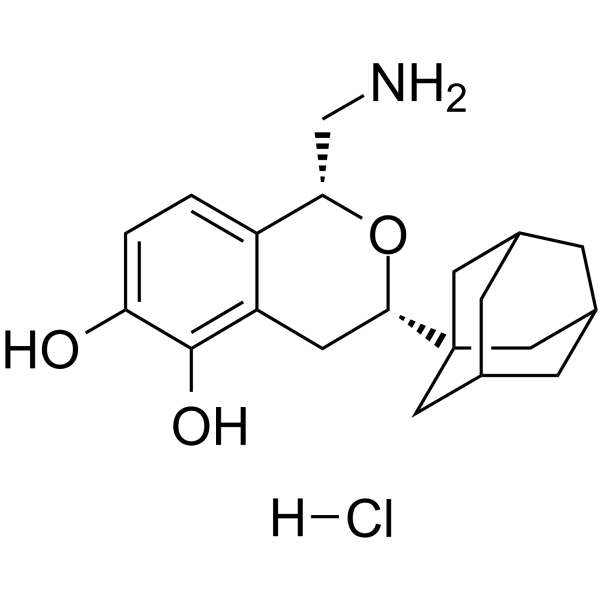
- HY-P1096
-
|
|
Cholecystokinin Receptor
|
Metabolic Disease
|
|
A71623, a CCK-4-based peptide, is a potent and highly selective CCK-A full agonist. The IC50s for A-71623 are 3.7 nM in guinea pig pancreas (CCK-A) and 4500 nM in cerebral cortex (CCK-B) in radioligand binding assays, respectively .
|
-

- HY-14292
-
|
|
Dipeptidyl Peptidase
|
Metabolic Disease
|
|
NVP-DPP728 is a potent, reversible and nitrile-dependent dipeptidyl peptidase IV (DPP-IV) inhibitor. NVP-DPP728 can inhibit human DPP-IV amidolytic activity with a Ki of 11 nM. NVP-DPP728 inhibits degradation of glucagon-like peptide-1 (GLP-1) and thereby potentiates insulin release in response to glucose intake. NVP-DPP728 can be used for researching diabetes .
|
-
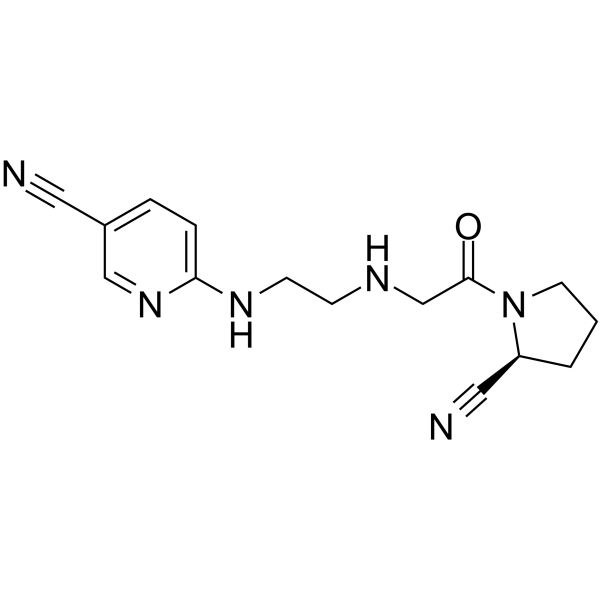
- HY-155967
-
|
|
AMPK
Cannabinoid Receptor
|
Metabolic Disease
|
|
CB1R/AMPK modulator 1 (Compound 38-S) is an orally active CB1R/AMPK modulator, with an Ki of 0.81 nM and an IC50 of 3.9 nM for CB1R. CB1R/AMPK modulator 1 activates AMPK. CB1R/AMPK modulator 1 reduces food intake and body weight, and improves glucose tolerance and insulin sensitivity .
|
-
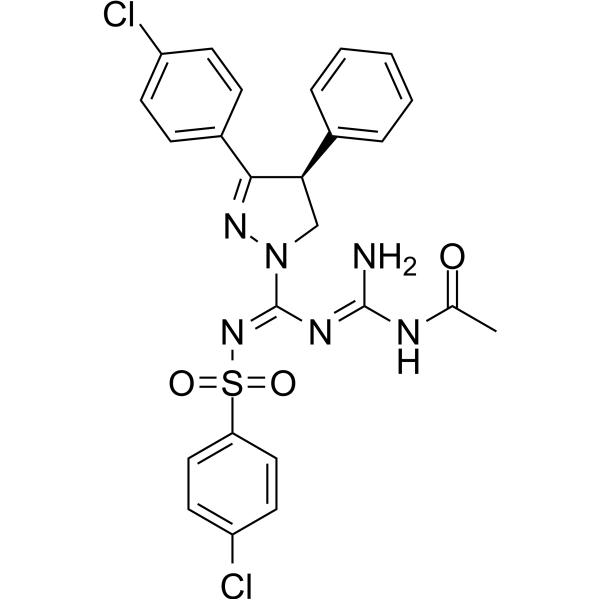
- HY-100546
-
|
|
Histone Demethylase
|
Infection
Metabolic Disease
Cancer
|
|
GSK-LSD1 is a LSD1 inhibitor. GSK-LSD1 reduces food intake and body weight, and improves insulin sensitivity and glycemic control in mouse models of obesity. GSK-LSD1 also ameliorates NAFLD. GSK-LSD1 inhibits SARS-CoV-2-triggered cytokine release in COVID-19 PBMCs. GSK-LSD1 also inhibits cancer growth and metastasis .
|
-
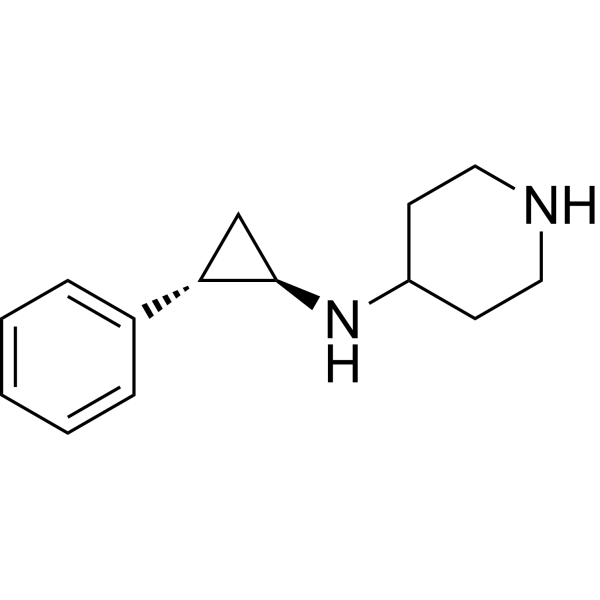
- HY-16673
-
|
|
GPR119
|
Metabolic Disease
|
|
PSN632408, a selective, orally active GPR119 agonist, shows similar potency to OEA at both recombinant mouse and human GPR119 receptors (EC50=5.6 and 7.9 uM, respectively). PSN632408 can stimulate β-cell replication and improve islet graft function. PSN632408 has the potential for the research of obesity and related metabolic disorders .
|
-
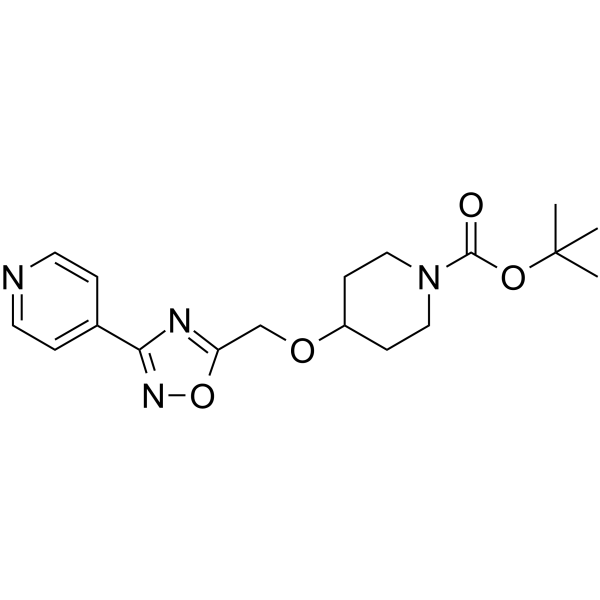
- HY-P1296
-
|
Urocortin (Rattus norvegicus); Rat urocortin
|
CRFR
|
Neurological Disease
Endocrinology
|
|
Urocortin, rat (Urocortin (Rattus norvegicus)) is a neuropeptide and a potent endogenous CRFR agonist with Kis of 13 nM, 1.5 nM, and 0.97 nM for human CRF1, rat CRF2α and mouse CRF2β, respectively .
|
-
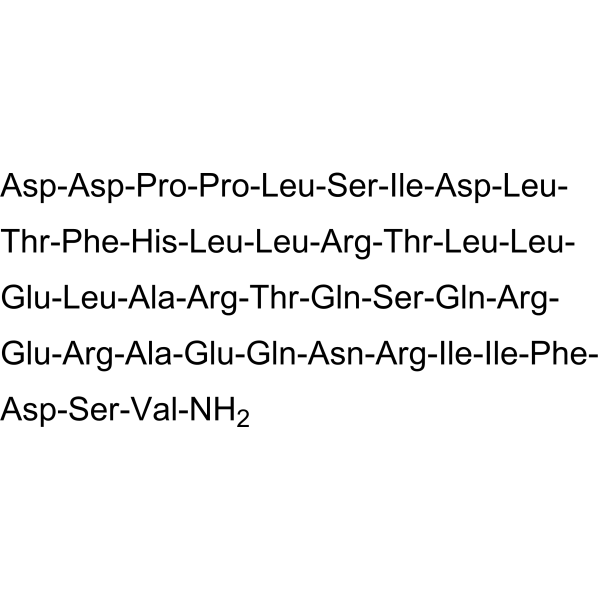
- HY-N7347
-
|
Garcinia lactone
|
ATP Citrate Lyase
|
Metabolic Disease
|
|
(-)-Hydroxycitric acid lactone (Garcinia lactone) is an anti-obesity agent and a popular weight loss food supplement. (-)-Hydroxycitric acid lactone is a potent inhibitor of ATP-citrate lyase. (-)-Hydroxycitric acid lactone catalyzes the extramitochondrial cleavage of citrate to oxaloacetate and acetyl-CoA, limits the availability of acetyl-CoA units required for fatty acid synthesis .
|
-
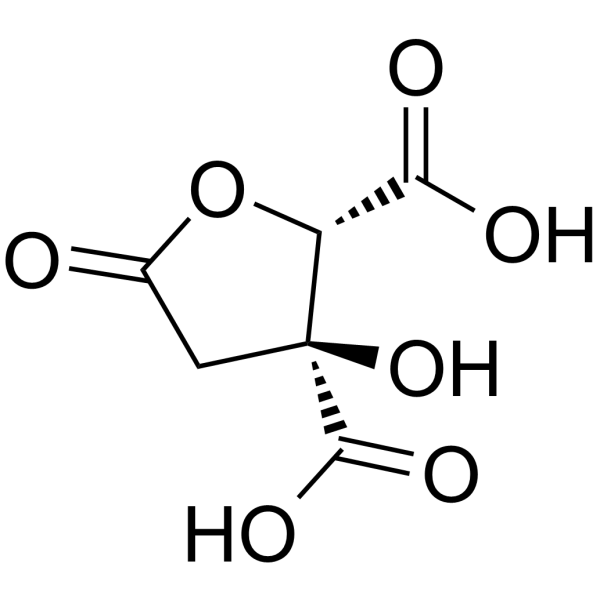
- HY-137061
-
-

- HY-113120
-
|
6Z,9Z,12Z,15Z-Octadecatetraenoic acid
|
Endogenous Metabolite
|
Others
|
|
Stearidonic acid (6Z,9Z,12Z,15Z-Octadecatetraenoic acid) is an intermediate fatty acid in the biosynthetic pathway from α-linolenic acid to VLC ω-3 PUFA. The conversion efficiency of stearidonic acid is higher than that of alpha-linolenic acid. Increasing the intake of stearidonic acid can increase the content of eicosapentaenoic acid (EPA) in red blood cells. Stearidonic acid can also be isolated from methanolic extracts of the brown alga Brachyphyllum gracilis .
|
-

- HY-124619
-
|
|
FKBP
HIV
|
Infection
Neurological Disease
|
|
GPI-1046 is a immunophilin ligand without antibiotic action and attenuates ethanol intake in part through the upregulation of glutamate transporter 1 (GLT1) in PFC and NAc-core. GPI-1046 is an analog of FK506, which is an immunophilin ligand that has been shown neuroprotective effects in neurodegenerative disease models . GPI-1046 readily crosses the blood-brain barrier and promotes the regeneration of dopamine (DA) cells in the CNS in association with functional recovery in rodent models . GPI-1046 improves HIV-associated injury of peripheral nerves .
|
-
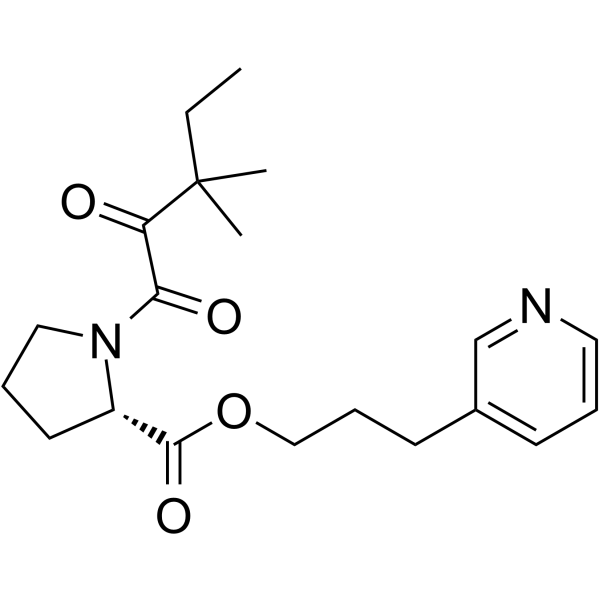
- HY-P1324
-
|
|
Neuropeptide Y Receptor
|
Neurological Disease
|
|
[cPP1-7,NPY19-23,Ala31,Aib32,Gln34]-hPancreatic Polypeptide is a potent and selective neuropeptide Y Y5 receptor agonist with an IC50 of 0.24 nM for binding to the hY5 receptor. [cPP1-7,NPY19-23,Ala31,Aib32,Gln34]-hPancreatic Polypeptide induces a high amount of food intake .
|
-
![[cPP1-7,NPY19-23,Ala31,Aib32,Gln34]-hPancreatic Polypeptide](//file.medchemexpress.com/product_pic/hy-p1324.gif)
- HY-P1324A
-
|
|
Neuropeptide Y Receptor
|
Neurological Disease
|
|
[cPP1-7,NPY19-23,Ala31,Aib32,Gln34]-hPancreatic Polypeptide is a potent and selective neuropeptide Y Y5 receptor agonist with an IC50 of 0.24 nM for binding to the hY5 receptor. [cPP1-7,NPY19-23,Ala31,Aib32,Gln34]-hPancreatic Polypeptide induces a high amount of food intake .
|
-
![[cPP1-7,NPY19-23,Ala31,Aib32,Gln34]-hPancreatic polypeptide TFA](//file.medchemexpress.com/product_pic/hy-p1324a.gif)
- HY-101365
-
|
|
5-HT Receptor
|
Neurological Disease
|
|
RS-102221 is a selective 5-HT2C receptor antagonist (Ki=10 nM). RS-102221 shows nearly 100-fold selectivity for the 5-HT2C receptor as compared to the 5-HT2A and 5-HT2B receptors. RS-102221 can promote the differentiation of new nerve cells. RS-102221 increases food-intake and weight-gain in rats .
|
-
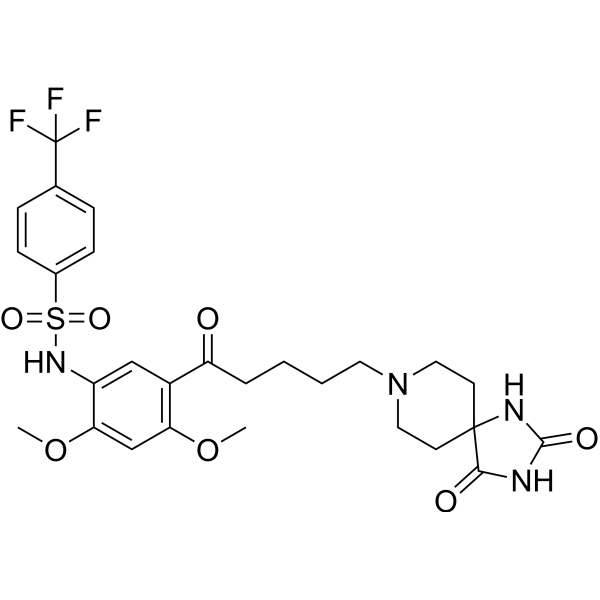
- HY-101365A
-
|
|
5-HT Receptor
|
Neurological Disease
|
|
RS-102221 hydrochloride is a selective 5-HT2C receptor antagonist (Ki=10 nM). RS-102221 hydrochloride shows nearly 100-fold selectivity for the 5-HT2C receptor as compared to the 5-HT2A and 5-HT2B receptors. RS-102221 hydrochloride can promote the differentiation of new nerve cells. RS-102221 hydrochloride increases food-intake and weight-gain in rats .
|
-
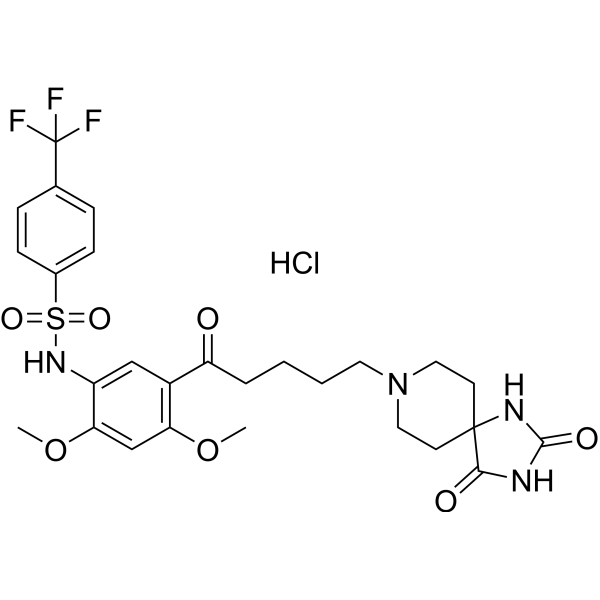
- HY-P1317
-
|
|
Opioid Receptor
|
Neurological Disease
|
|
Nociceptin (1-13), amide is a potent ORL1 receptor (opioid receptor-like 1 receptor, OP4) agonist with a pEC50 of 7.9 for mouse vas deferens and a Ki of 0.75 nM for binding to rat forebrain membranes .
|
-

- HY-P1296A
-
|
Urocortin (Rattus norvegicus) (TFA); Rat urocortin TFA
|
CRFR
|
Neurological Disease
Endocrinology
|
|
Urocortin, rat TFA (Urocortin (Rattus norvegicus) TFA) is a neuropeptide and a potent endogenous CRFR agonist with Kis of 13 nM, 1.5 nM, and 0.97 nM for human CRF1, rat CRF2α and mouse CRF2β, respectively .
|
-

- HY-P1317A
-
|
|
Opioid Receptor
|
Neurological Disease
|
|
Nociceptin (1-13), amide TFA is a potent ORL1 receptor (opioid receptor-like 1 receptor, OP4) agonist with a pEC50 of 7.9 for mouse vas deferens and a Ki of 0.75 nM for binding to rat forebrain membranes .
|
-
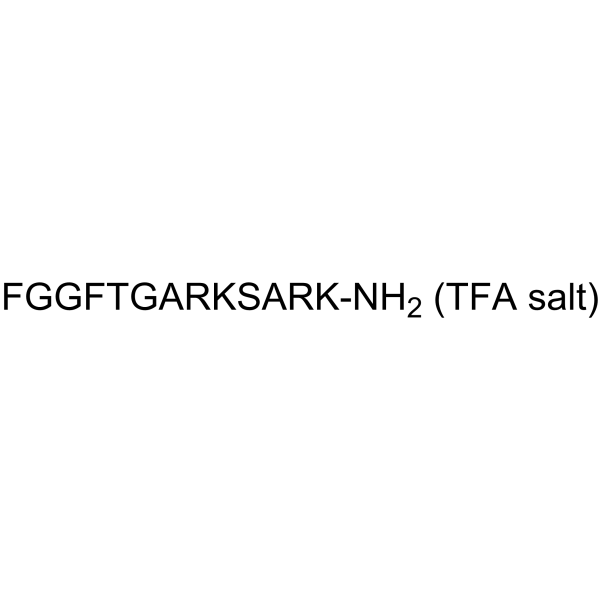
- HY-W011220
-
|
ADD-3878; U-63287
|
PPAR
|
Cardiovascular Disease
Cancer
|
|
Ciglitazone is a potent and selective PPARγ agonist (EC50=3 μM). Ciglitazone inhibits proliferation and differentiation of th17 cells. Ciglitazone is a hypoglycemic agent orally active in the obese-hyperglycemic animal models. Ciglitazone induces apoptosis accompanied by activation of p38 MAPK and nuclear translocation of apoptosis inducing factor (AIF) in opossum kidney (OK) renal epithelial cells .
|
-
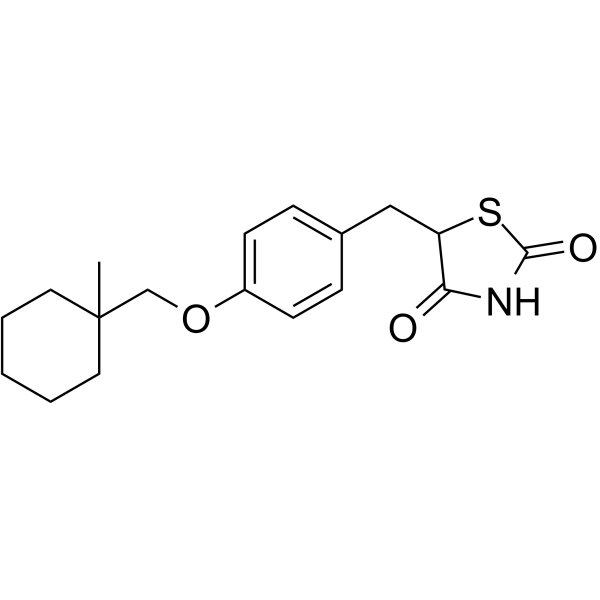
- HY-P2242A
-
|
|
Melanocortin Receptor
|
Neurological Disease
Inflammation/Immunology
|
|
RO27-3225 TFA is potent and selective melanocortin 4 receptor (MC4R) agonist with an EC50 of 1 nM and 8 nM for MC4R and MC1R, respectively. RO27-3225 TFA shows ~30-fold selectivity for MC4R over MC3R. RO27-3225 TFA has neuroprotective and anti-inflammatory effects .
|
-
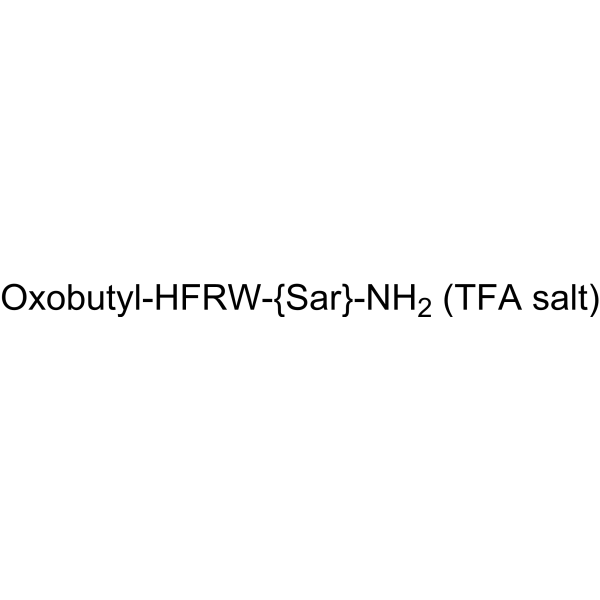
- HY-150700
-
|
|
ERK
|
Metabolic Disease
|
|
RLX-33 is a potent, selective and blood-brain barrier (BBB) penetrant relaxin family peptide 3 (RXFP3) antagonist, also blocks relaxin-3-induced ERK1/2 phosphorylation, with IC50 values of 2.36 μM for RXFP3, 7.82 and 13.86 μM for ERK1 and ERK2 phosphorylation, respectively. RLX-33 can block the stimulation of food intake induced by the RXFP3-selective agonist R3/I5 in rats. RLX-33 can be used for the research of metabolic syndrome .
|
-
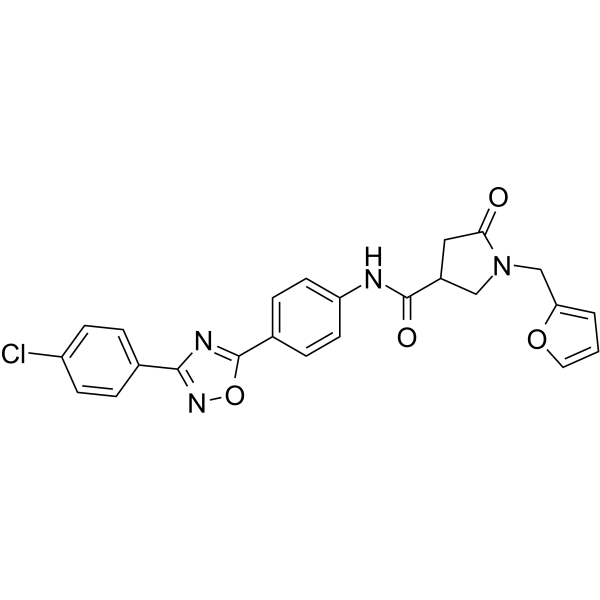
- HY-B1618
-
Corticosterone
Maximum Cited Publications
28 Publications Verification
17-Deoxycortisol; 11β,21-Dihydroxyprogesterone; Kendall's compound B
|
Glucocorticoid Receptor
Endogenous Metabolite
iGluR
|
Neurological Disease
Inflammation/Immunology
Endocrinology
|
|
Corticosterone (17-Deoxycortisol) is an orally active and adrenal cortex-produced glucocorticoid, which plays an important role in regulating neuronal functions of the limbic system (including hippocampus, prefrontal cortex, and amygdala). Corticosterone increases the Rab-mediated AMPAR membrane traffic via SGK-induced phosphorylation of GDI. Corticosterone also interferes with the maturation of dendritic cells and shows a good immunosuppressive effect .
|
-
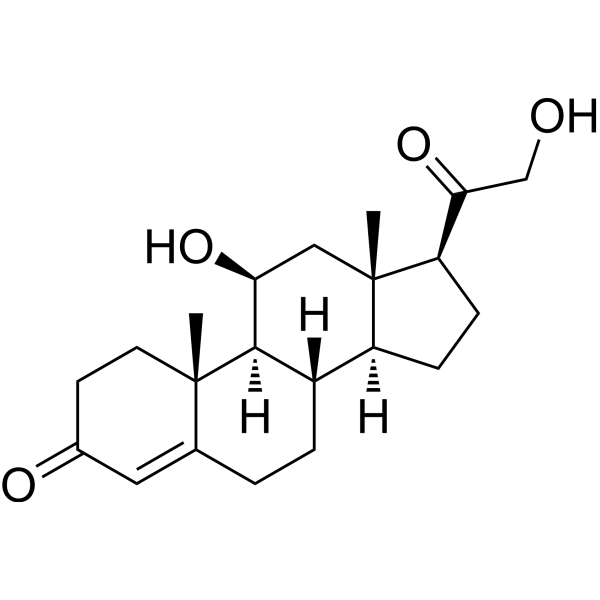
- HY-14229
-
|
CCDC
|
G protein-coupled Bile Acid Receptor 1
Calcium Channel
|
Metabolic Disease
|
|
TGR5 Receptor Agonist (CCDC), a potent Takeda G protein-coupled receptor 5 (TGR5; GPCR19) agonist, shows improved potency in the U2-OS cells and melanophore cells with pEC50s of 6.8 and 7.5, respectively. TGR5 Receptor Agonist can induce peripheral and central hypersensitivity to bladder distension in mice, and increase intracellular Ca 2+ concentration. TGR5 Receptor Agonist can also reduces food intake and improves insulin responsiveness, in diet-induced obese mice. TGR5 Receptor Agonist can be used to research diabetes, bladder hypersensitivity and anti-obesity .
|
-

- HY-137863
-
|
|
Others
|
Inflammation/Immunology
|
|
Pemirolast is an orally active antiallergic agent. Pemirolast attenuates paclitaxel hypersensitivity reactions, can be used for bronchial asthma and conjunctivitis research - .
|
-
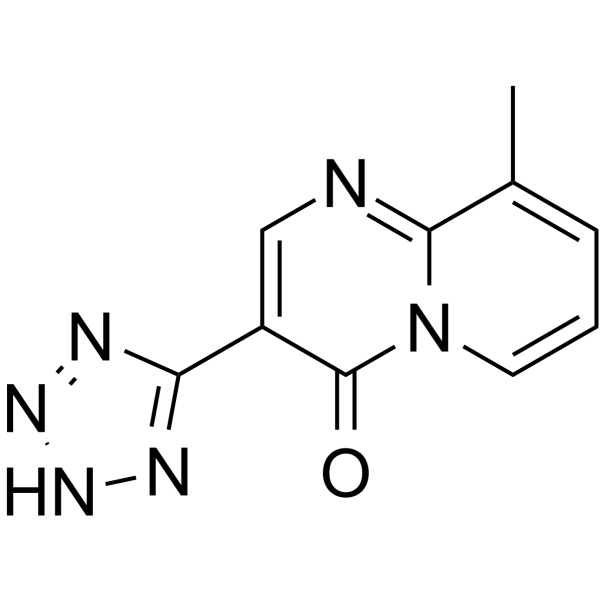
- HY-110206
-
|
|
Cannabinoid Receptor
|
Metabolic Disease
|
|
AM6545 is a peripherally active, cannabinoid receptor antagonist with limited brain penetration. AM6545 binds to CB1 and CB2 receptors with Kis of 1.7 nM and 523 nM, respectively. AM6545 is a neutral antagonist. AM6545 can be used for the research of obesity and its complications .
|
-
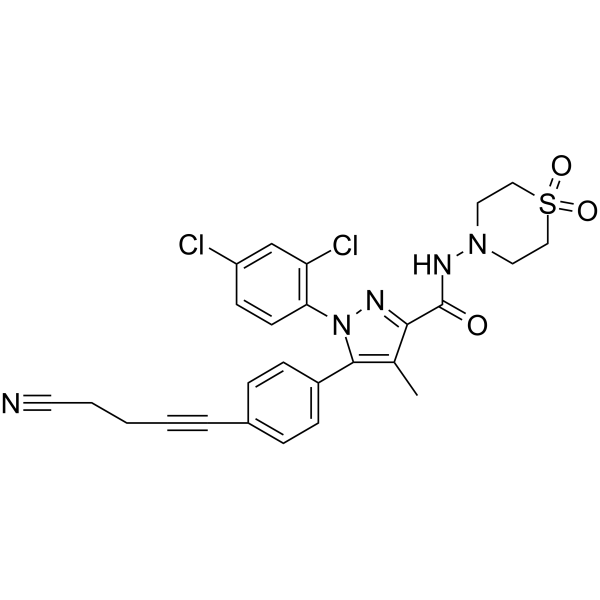
-
-
HY-L094
-
|
|
1,985 compounds
|
|
The health benefits deriving from the consumption of certain foods have been common knowledge. All foods are made up of chemical substances. Chemicals in foods are largely harmless and often desirable. At present, numerous researchers have been focused on the beneficial role played by certain food components in the close relationship between food intake and health status. For example, polyphenols, a common class of compounds among foods, are well-known antioxidants, which may play a role in the prevention of several diseases including type 2 diabetes, cardiovascular diseases, and some types of cancer.
MCE supplies a unique collection of 1,985 compounds from variety of foods. All compounds are with specific food source(s). MCE Food-Sourced Compound Library is the useful tool to discover molecules with pharmaceutical activity from foods.
|
| Cat. No. |
Product Name |
Type |
-
- HY-W250120
-
|
|
Biochemical Assay Reagents
|
|
Konjac glucomannan (Viscosity≥15000mPa.s) is an acetylated (1-4)-beta-D-glucomannan extracted from the tuber of konjac or konjac root. In Japan, it is a dietary supplement intended to reduce calorie intake because it swells in water.
|
-
- HY-W127334
-
|
|
Biochemical Assay Reagents
|
|
N-Palmitoyl phosphatidylethanolamine (Tripelargonin) is endogenous lipid anorectic hormone, significantly reduces food intake in a dose-dependent manner
|
-
- HY-N8279
-
|
Endo-β-1,3-1,4-glucanase
|
Biochemical Assay Reagents
|
|
β-1,3-1,4-Glucanase catalyzes the hydrolysis ofβ-glucan into low molecular weight glucose polymers, thus reducing the hydrophilicity and viscosity of chyme and eliminating the anti-nutritional negative effect. β-1,3-1,4-glucanase can improve feed intake, enhance animal production, regulate cecal microbiota and increase feed conversion ratio .
|
| Cat. No. |
Product Name |
Target |
Research Area |
-
- HY-P3651
-
|
CCK (26-33) (free acid)
|
Peptides
|
Metabolic Disease
|
|
Cholecystokinin (26-33) (CCK (26-33)) free acid is a cholecystokinin (CCK) fragment. Cholecystokinin (26-33) free acid can reduce food intake and gallbladder contraction .
|
-
- HY-P1215A
-
|
|
Melanocortin Receptor
|
Metabolic Disease
|
|
HS024 is a selective MC4 receptor antagonist, with Kis of 0.29, 3.29, 5.45, 18.6 nM for MC4, MC5, MC3, and MC1, respectively. HS024 increase food intake .
|
-
- HY-P3462A
-
|
|
CGRP Receptor
|
Metabolic Disease
|
|
Cagrilintide acetate is a non-selective AMYR/CTR agonist and long-acting acylated amylase analogue. Cagrilintide acetate causes a reduction in food intake and significant weight loss in a dose-dependent manner. Cagrilintide acetate can be used in obesity studies .
|
-
- HY-P1215
-
|
|
Melanocortin Receptor
|
Metabolic Disease
|
|
HS024 is a selective MC4 receptor antagonist, with Kis of 0.29, 3.29, 5.45, and 18.6 nM for MC4, MC5, MC3, and MC1, respectively. HS024 increase food intake .
|
-
- HY-P3652
-
|
|
Peptides
|
Metabolic Disease
|
|
Cholecystokinin-33 (swine) is a cholecystokinin (CCK) fragment. Cholecystokinin-33 (swine) can reduce food intake and gallbladder contraction .
|
-
- HY-P4689
-
|
|
Peptides
|
Metabolic Disease
|
|
Prolactin-Releasing Peptide (1-31) (rat) is a UHR-1/GRP10 receptor ligand. Prolactin-Releasing Peptide (1-31) (rat) reduces fasting-induced food intake, increases plasma levels of LH, FSH, and testosterone in rats .
|
-
- HY-P3462
-
|
|
CGRP Receptor
|
Metabolic Disease
|
|
Cagrilintide is an investigational novel long-acting acylated amylin analogue, acts as nonselective amylin receptors (AMYR) and calcitonin G protein-coupled receptor (CTR) agonist. Cagrilintide induces significant weight loss and reduces food intake. Cagrilintide has the potential for the research of obesity .
|
-
- HY-P1067A
-
|
|
Endogenous Metabolite
|
Metabolic Disease
|
|
Enterostatin (human,mouse,rat) TFA is a pentapeptide mainly formed in the intestine by the cleavage of secreted pancreatic procolipase. Enterostatin selectively reduces fat intake, bodyweight, and body fat in vivo .
|
-
- HY-P3704
-
|
|
Endogenous Metabolite
|
Metabolic Disease
|
|
Enterostatin (rat), an orally active activation peptide of procolipase, selectively reduces fat intake. Enterostatin (rat) reduces serum cholesterol levels by way of a CCK1 receptor-dependent mechanism .
|
-
- HY-P1216A
-
|
|
Melanocortin Receptor
|
Neurological Disease
|
|
HS014 TFA is a potent and selective melanocortin-4 (MC4) receptor antagonist, with Kis of 3.16, 108, 54.4 and 694 nM for human MC4, MC1, MC3 and MC5 receptors respectively. HS014 TFA increases food intake in free-feeding rats .
|
-
- HY-P2210
-
|
|
GPR171
|
Metabolic Disease
|
|
BigLEN(mouse) is a potent and selective agonist of orphan G protein-coupled receptor 171 (GPR171), with a Kd of ∼0.5 nM. BigLEN(mouse) can be used to regulate responses associated with food intake and metabolism .
|
-
- HY-P2046
-
|
|
Opioid Receptor
|
Neurological Disease
|
|
β-Endorphin (rat) is an endogenous opioid neuropeptide and peptide hormone. β-Endorphin (rat) has analgesic activity and also contributes to food intake in satiated rats. β-Endorphin (rat) can be used in the research of neurological diseases such as analgesia and drug addiction .
|
-
- HY-P2932
-
|
Cholecystokinin-33(human); CCK-33(human)
|
Peptides
|
Metabolic Disease
|
|
Cholecystokinin is a peptide hormone. Cholecystokinin, as a hunger suppressant, inhibits food intake and stimulates the digestion of fat and protein. Cholecystokinin can be used for the research of gastrointestinal system .
|
-
- HY-P3561
-
|
|
Melanocortin Receptor
|
Neurological Disease
|
|
Agouti-related Protein (AGRP) (83-132) Amide (human) is a fragment of agouti-related protein (AGRP) which is a protein found in abundance in the arcuate nucleus of the hypothalamus. AgRP primarily acts as an inverse agonist for the melanocortin-4 receptor (MC4R) to increase food intake .
|
-
- HY-P3561A
-
|
|
Melanocortin Receptor
|
Neurological Disease
|
|
Agouti-related Protein (AGRP) (83-132) Amide (human) TFA is a fragment of agouti-related protein (AGRP) which is a protein found in abundance in the arcuate nucleus of the hypothalamus. AgRP primarily acts as an inverse agonist for the melanocortin-4 receptor (MC4R) to increase food intake .
|
-
- HY-P3130
-
|
|
CRFR
|
Neurological Disease
Inflammation/Immunology
|
|
Stresscopin-related peptide (human) is a specific ligand for the type 2 CRH receptor. Stresscopin-related peptide (human) suppresses food intake, delayed gastric emptying and decreases heat-induced edema. Stresscopin-related peptide (human) maintains homeostasis after stress, and can be used in the research of stress-related diseases .
|
-
- HY-P1216
-
|
|
Melanocortin Receptor
|
Neurological Disease
|
|
HS014 is a potent and selective melanocortin-4 (MC4) receptor antagonist, with Kis of 3.16, 108, 54.4 and 694 nM for human MC4, MC1, MC3 and MC5 receptors, respectively. HS014 modulates the behavioral effects of morphine in mice. HS014 increases food intake in free-feeding rats .
|
-
- HY-P1322
-
|
|
Neuropeptide Y Receptor
|
Neurological Disease
|
|
[D-Trp34]-Neuropeptide Y is a potent and selective neuropeptide Y (NPY) Y5 receptor agonist. [D-Trp34]-Neuropeptide Y is a significantly less potent agonist at the NPY Y1, Y2, Y4, and y6 receptors. [D-Trp34]-Neuropeptide Y markedly increases food intake in rats .
|
-
- HY-P1322A
-
|
|
Neuropeptide Y Receptor
|
Neurological Disease
|
|
[D-Trp34]-Neuropeptide Y TFA is a potent and selective neuropeptide Y (NPY) Y5 receptor agonist. [D-Trp34]-Neuropeptide Y TFA is a significantly less potent agonist at the NPY Y1, Y2, Y4, and y6 receptors. [D-Trp34]-Neuropeptide Y TFA markedly increases food intake in rats .
|
-
- HY-P1306
-
|
|
GHSR
|
Cardiovascular Disease
Inflammation/Immunology
|
|
Obestatin(rat), encoded by the Ghrelin gene, is a cpeptide, comprised of 23 amino acids. Obestatin(rat) suppresses food intake, inhibits jejunal contraction, and decreases body-weight gain. Obestatin is an endogenous ligand of G-protein coupled receptor 39 (GPR39). Obestatin(rat) has anti-inflammatory, anti-myocardial infarction and antioxidant activities .
|
-
- HY-P1306A
-
|
|
GHSR
|
Cardiovascular Disease
Inflammation/Immunology
|
|
Obestatin(rat) TFA, encoded by the Ghrelin gene, is a cpeptide, comprised of 23 amino acids. Obestatin(rat) TFA suppresses food intake, inhibits jejunal contraction, and decreases body-weight gain. Obestatin is an endogenous ligand of G-protein coupled receptor 39 (GPR39). Obestatin(rat) TFA has anti-inflammatory, anti-myocardial infarction and antioxidant activities .
|
-
- HY-P1349A
-
|
Rat orexin B TFA; Orexin B (mouse) (TFA)
|
Orexin Receptor (OX Receptor)
|
Neurological Disease
Endocrinology
|
|
Orexin B, rat, mouse (Rat orexin B) TFA is an endogenous orexin receptor agonist. Orexin B, rat, mouse TFA binds and activates two closely related orphan G protein-coupled receptors OX1-R and OX2-R. Orexin B, rat, mouse TFA stimulates food intake and energy expenditure and plays a significant role in sleep-wakefulness regulation .
|
-
- HY-P3463
-
|
GLP-1 (human)
|
GCGR
|
Metabolic Disease
Inflammation/Immunology
|
|
Beinaglutide is a human GLP-1 polypeptide that shares almost 100% homology with human GLP-1 (7–36). Beinaglutide displays does-dependent effects in glycemic control, inhibiting food intake and gastric empty and promoting weight loss. Beinaglutide has the potential for the research of overweight/obesity and nonalcoholic steatohepatitis (NASH) .
|
-
- HY-P1323
-
|
|
Neuropeptide Y Receptor
|
Cardiovascular Disease
Neurological Disease
|
|
[Leu31,Pro34]-Neuropeptide Y(human,rat) is a specific neuropeptide Y Y1 receptor agonist. [Leu31,Pro34]-Neuropeptide Y(human,rat) slao activates Y4, Y5. [Leu31,Pro34]-Neuropeptide Y(human,rat) can increase blood pressure in anesthetized rats and increases food intake .
|
-
- HY-P1323A
-
|
|
Neuropeptide Y Receptor
|
Cardiovascular Disease
Neurological Disease
|
|
[Leu31,Pro34]-Neuropeptide Y(human,rat) TFA is a specific neuropeptide Y Y1 receptor agonist. [Leu31,Pro34]-Neuropeptide Y(human,rat) TFA slao activates Y4, Y5. [Leu31,Pro34]-Neuropeptide Y(human,rat) TFA can increase blood pressure in anesthetized rats and increases food intake .
|
-
- HY-P4146
-
|
BI 456906
|
GLP Receptor
GCGR
|
Metabolic Disease
|
|
Survodutide (BI 456906) is a potent, selective glucagon receptor/GLP-1 receptor (GCGR/GLP-1R) dual agonist with EC50s of 0.52 nM and 0.33 nM in CHO-K1 cells, respectively. Survodutide, a 29-amino-acid peptide, is a potent acylated peptide containing a C18 fatty acid. Survodutide has robust anti-obesity efficacy achieved by increasing energy expenditure and decreasing food intake .
|
-
- HY-P4146A
-
|
BI 456906 TFA
|
GLP Receptor
GCGR
|
Metabolic Disease
|
|
Survodutide (BI 456906) TFA is a potent, selective glucagon receptor/GLP-1 receptor (GCGR/GLP-1R) dual agonist with EC50s of 0.52 nM and 0.33 nM in CHO-K1 cells, respectively. Survodutide TFA, a 29-amino-acid peptide, is a potent acylated peptide containing a C18 fatty acid. Survodutide TFA has robust anti-obesity efficacy achieved by increasing energy expenditure and decreasing food intake .
|
-
- HY-P1067
-
-
- HY-P0259
-
-
- HY-P1421A
-
|
|
Peptides
|
|
|
Obestatin(human) TFA is an endogenous peptide derived from the same prepropeptide as ghrelin. Obestatin(human) suppresses food intake and reduce body weight-gain in rats.
|
-
- HY-107627
-
|
|
Melanocortin Receptor
|
Inflammation/Immunology
|
|
MCL0020 is a potent and selective melanocortin MC4 receptor antagonist, with an IC50 of 11.63 nM. MCL0020 dose-dependently and significantly attenuates restraint stress-induced anorexia without affecting food intake .
|
-
- HY-P4839
-
|
|
Peptides
|
Metabolic Disease
|
|
GLP-2 (1-34) (human) is a polypeptide released from the intestine within minutes after food intake. GLP-2 (1-34) (human) can be used for the research of bone remodeling processes .
|
-
- HY-P4815
-
|
|
Endogenous Metabolite
|
Neurological Disease
Metabolic Disease
|
|
Prokineticin 2 Isoform 2 (human) is a hypothalamic neuropeptide. Prokineticin 2 Isoform 2 (human) decreases food intake and involves in thermoregulation and energy metabolism in rodents. Prokineticin 2 has the potential for the research of hyperglycemia, metabolic syndrome (MetS) and obesity .
|
-
- HY-P10041
-
|
|
Peptides
|
Metabolic Disease
|
|
Obestatin(11-23)mouse, rat is a polypeptide involved in regulating energy balance and inhibiting eating. Obestatin(11-23)mouse, rat causes reduced food intake, body weight, and jejunal contractions in rodents .
|
-
- HY-P2210A
-
|
|
Peptides
|
|
|
BigLEN(mouse) TFA is a GPR171 agonist. BigLEN(mouse) TFA is a proSAAS-derived neuropeptide. BigLEN(mouse) TFA regulates food intake in mice. BigLEN(mouse) inhibits the release of glutamate onto parvocellular neurons of the paraventricular nucleus in a process dependent upon activation of postsynaptic G proteins.
|
-
- HY-P2703
-
|
|
Neuropeptide Y Receptor
|
Metabolic Disease
Endocrinology
|
|
Peptide YY (pig) is a 36 amino acid gastrointestinal peptide, can be isolated from porcine duodenum. Peptide YY (pig) decreases appetite and food-intake by activation of the Y2 receptor. Peptide YY (pig) is present mainly in pancreatic endocrine cells with effect on both intestinal motility and the cardiovascular system .
|
-
- HY-P1525
-
|
MCH (salmon)
|
MCHR1 (GPR24)
|
Cardiovascular Disease
Neurological Disease
Metabolic Disease
Endocrinology
|
|
Melanin Concentrating Hormone, salmon is a 19-amino-acid neuropeptide initially identified in the pituitary gland of teleost fish, which regulates food intake, energy balance, sleep state, and the cardiovascular system. Melanin-concentrating hormone is a ligand for an orphan G protein-coupled receptor (SLC-1/GPR24) and MCHR2.
|
-
- HY-P1525A
-
|
MCH (salmon) (TFA)
|
MCHR1 (GPR24)
|
Cardiovascular Disease
Neurological Disease
Metabolic Disease
Endocrinology
|
|
Melanin Concentrating Hormone, salmon TFA (MCH (salmon) TFA) is a 19-amino-acid neuropeptide initially identified in the pituitary gland of teleost fish, which regulates food intake, energy balance, sleep state, and the cardiovascular system. Melanin-concentrating hormone is a ligand for an orphan G protein-coupled receptor (SLC-1/GPR24) and MCHR2.
|
-
- HY-P0198B
-
-
- HY-P3555
-
-
- HY-P3555A
-
|
|
Opioid Receptor
|
Others
|
|
D-Ala-Gly-Phe-Met-NH2 monoacetate, an opioid peptide, is a potent opiate δ-receptor agonist .
|
-
- HY-P1349
-
-
- HY-P1096
-
|
|
Cholecystokinin Receptor
|
Metabolic Disease
|
|
A71623, a CCK-4-based peptide, is a potent and highly selective CCK-A full agonist. The IC50s for A-71623 are 3.7 nM in guinea pig pancreas (CCK-A) and 4500 nM in cerebral cortex (CCK-B) in radioligand binding assays, respectively .
|
-
- HY-P1296
-
|
Urocortin (Rattus norvegicus); Rat urocortin
|
CRFR
|
Neurological Disease
Endocrinology
|
|
Urocortin, rat (Urocortin (Rattus norvegicus)) is a neuropeptide and a potent endogenous CRFR agonist with Kis of 13 nM, 1.5 nM, and 0.97 nM for human CRF1, rat CRF2α and mouse CRF2β, respectively .
|
-
- HY-P1324
-
|
|
Neuropeptide Y Receptor
|
Neurological Disease
|
|
[cPP1-7,NPY19-23,Ala31,Aib32,Gln34]-hPancreatic Polypeptide is a potent and selective neuropeptide Y Y5 receptor agonist with an IC50 of 0.24 nM for binding to the hY5 receptor. [cPP1-7,NPY19-23,Ala31,Aib32,Gln34]-hPancreatic Polypeptide induces a high amount of food intake .
|
-
- HY-P1324A
-
|
|
Neuropeptide Y Receptor
|
Neurological Disease
|
|
[cPP1-7,NPY19-23,Ala31,Aib32,Gln34]-hPancreatic Polypeptide is a potent and selective neuropeptide Y Y5 receptor agonist with an IC50 of 0.24 nM for binding to the hY5 receptor. [cPP1-7,NPY19-23,Ala31,Aib32,Gln34]-hPancreatic Polypeptide induces a high amount of food intake .
|
-
- HY-P5390
-
|
|
Peptides
|
Others
|
|
GIP, rat is a biological active peptide. (GIP (Glucose-dependent Insulinotropic Polypeptide or also known as Gastric Inhibitory Polypeptide) is a 42-amino acid peptide released by the K cells of the duodenum and jejunum in response to food intake. GIP, together with GLP (Gastric-like Peptide) are members of the hormone peptide family of Incretins which stimulate insulin secretion from pancreatic islet β-cells, and also appears to promote beta cell proliferation and beta cell survival. Recent studies suggest that GIP plays a role in lipid homeostasis and possibly in the pathogenesis of obesity.)
|
-
- HY-P1317
-
|
|
Opioid Receptor
|
Neurological Disease
|
|
Nociceptin (1-13), amide is a potent ORL1 receptor (opioid receptor-like 1 receptor, OP4) agonist with a pEC50 of 7.9 for mouse vas deferens and a Ki of 0.75 nM for binding to rat forebrain membranes .
|
-
- HY-P1296A
-
|
Urocortin (Rattus norvegicus) (TFA); Rat urocortin TFA
|
CRFR
|
Neurological Disease
Endocrinology
|
|
Urocortin, rat TFA (Urocortin (Rattus norvegicus) TFA) is a neuropeptide and a potent endogenous CRFR agonist with Kis of 13 nM, 1.5 nM, and 0.97 nM for human CRF1, rat CRF2α and mouse CRF2β, respectively .
|
-
- HY-P1317A
-
|
|
Opioid Receptor
|
Neurological Disease
|
|
Nociceptin (1-13), amide TFA is a potent ORL1 receptor (opioid receptor-like 1 receptor, OP4) agonist with a pEC50 of 7.9 for mouse vas deferens and a Ki of 0.75 nM for binding to rat forebrain membranes .
|
- HY-P5519
-
|
|
Peptides
|
Others
|
|
[Thr28, Nle31]-Cholecystokinin (25-33) is a biological active peptide. (Cholecystokinin (CCK) acts both as a hormone and a neurotransmitter and is found in the GI system and the central nervous system. It is a satiety peptide that inhibits food intake.This Cholecystokinin (CCK) analog retains all the bioactivities of CCK8, but was found to be remarkably more stable in acidic media and unaffected by air oxidation due to Met replacements (Thr 28 and Nle31 were substituted for Methionine). The predominant conformation contains a gamma-turn centered on Thr4, separated by Gly5 from a helical segment that comprises the C-terminal residues.)
|
- HY-P5390A
-
|
|
Peptides
|
Others
|
|
GIP, rat TFA is a bioactive peptide of rat origin. (GIP (glucose-dependent insulinotropic polypeptide or also known as gastric inhibitory polypeptide) is a 42-amino acid peptide released by K cells in the duodenum and jejunum in response to food intake. GIP and GLP (gastric-like peptide) are both intestinal A member of the insulinotropic hormone peptide family that stimulates insulin secretion from pancreatic beta cells and appears to also promote beta cell proliferation and beta cell survival. Recent studies suggest that GIP plays a role in lipid homeostasis and may play a role in the pathogenesis of obesity function in the mechanism.
|
- HY-P2242A
-
|
|
Melanocortin Receptor
|
Neurological Disease
Inflammation/Immunology
|
|
RO27-3225 TFA is potent and selective melanocortin 4 receptor (MC4R) agonist with an EC50 of 1 nM and 8 nM for MC4R and MC1R, respectively. RO27-3225 TFA shows ~30-fold selectivity for MC4R over MC3R. RO27-3225 TFA has neuroprotective and anti-inflammatory effects .
|
| Cat. No. |
Product Name |
Target |
Research Area |
-
- HY-P99388
-
|
REGN-1033
|
Inhibitory Antibodies
|
Metabolic Disease
|
|
Trevogrumab (REGN-1033) is a monoclonal antibody targeting GDF8 (growth differentiation factor 8, also known as muscle growth inhibitor). Trevogrumab is used in studies of sarcopenia, including wasting atrophy, chronic diseases, and changes in food and nutritional intake .
|
| Cat. No. |
Product Name |
Category |
Target |
Chemical Structure |
| Cat. No. |
Product Name |
Chemical Structure |
-
- HY-W010042S
-
|
|
|
L-Glucose- 13C is the 13C labeled L-Glucose. L-Glucose (L-(-)-Glucose) is an enantiomer of D-glucose. L-Glucose can promote food intake[1][2].
|
-

-
- HY-124412S
-
|
|
|
Paynantheine-d3 is a deuterium labeled Paynantheine. Paynantheine is an alkaloid that can be isolated from Mitragyna speciosa. Paynantheine can decrease alcohol intake in mice .
|
-

-
- HY-135502S
-
|
|
|
Speciogynine-d3 is a deuterium labeled Speciogynine. Speciogynine is an alkaloid that can be isolated from Mitragyna speciosa. Speciogynine can decrease alcohol intake in mice .
|
-

-
- HY-W010042S1
-
|
|
|
L-Glucose- 13C-1 is the 13C labeled L-Glucose. L-Glucose (L-(-)-Glucose) is an enantiomer of D-glucose. L-Glucose can promote food intake[1][2].
|
-

-
- HY-W010042S2
-
|
|
|
L-Glucose- 13C-2 is the 13C labeled L-Glucose. L-Glucose (L-(-)-Glucose) is an enantiomer of D-glucose. L-Glucose can promote food intake[1][2].
|
-

-
- HY-15121S
-
|
|
|
L-Theanine-d5 is the deuterium labeled L-Theanine. L-Theanine (L-Glutamic Acid γ-ethyl amide)is a non-protein amino acid contained in green tea leaves, which blocks the binding of L-glutamic acid to glutamate receptors in the brain, and with neuroprotective and anti-oxidative activities. L-Theanine causes anti-stress effects via the inhibition of cortical neuron excitation by oral intake[1][2][3].
|
-

-
- HY-W010042S3
-
|
|
|
L-Glucose- 13C6 (L-(-)-Glucose- 13C6) is C13-labeled L-Glucose. L-Glucose is an enantiomer of D-glucose. L-Glucose enhances food intake .
|
-

-
- HY-W017006S
-
|
|
|
1-Methyl-L-histidine-d3 is the deuterium labeled 1-Methyl-L-histidine. 1-Methyl-L-histidine is an objective indicator of meat ingestion and exogenous 3-methylhistidine (3MH) intake.
|
-

Your information is safe with us. * Required Fields.
Inquiry Information
- Product Name:
- Cat. No.:
- Quantity:
- MCE Japan Authorized Agent:





























![[D-Trp34]-Neuropeptide Y](http://file.medchemexpress.com/product_pic/hy-p1322.gif)

![[D-Trp34]-Neuropeptide Y TFA](http://file.medchemexpress.com/product_pic/hy-p1322a.gif)





![[Leu31,Pro34]-Neuropeptide Y (human,rat)](http://file.medchemexpress.com/product_pic/hy-p1323.gif)
![[Leu31,Pro34]-Neuropeptide Y(human,rat,mouse) TFA](http://file.medchemexpress.com/product_pic/hy-p1323a.gif)















































![[D-Arg25]-Neuropeptide Y (human)](http://file.medchemexpress.com/product_pic/hy-p0198b.gif)
















![[cPP1-7,NPY19-23,Ala31,Aib32,Gln34]-hPancreatic Polypeptide](http://file.medchemexpress.com/product_pic/hy-p1324.gif)
![[cPP1-7,NPY19-23,Ala31,Aib32,Gln34]-hPancreatic polypeptide TFA](http://file.medchemexpress.com/product_pic/hy-p1324a.gif)















